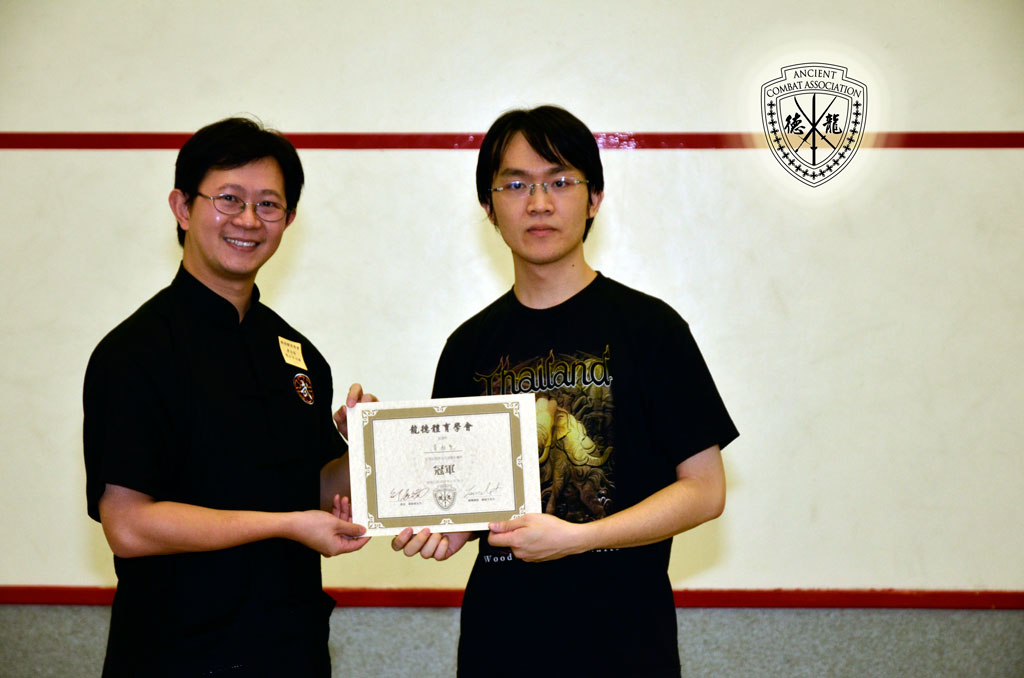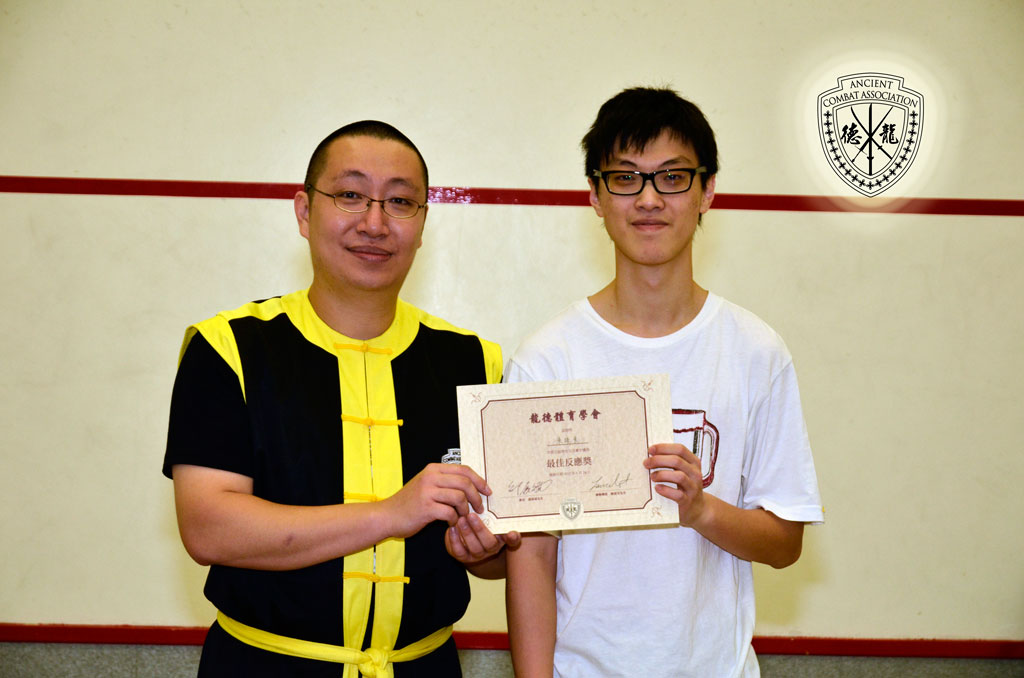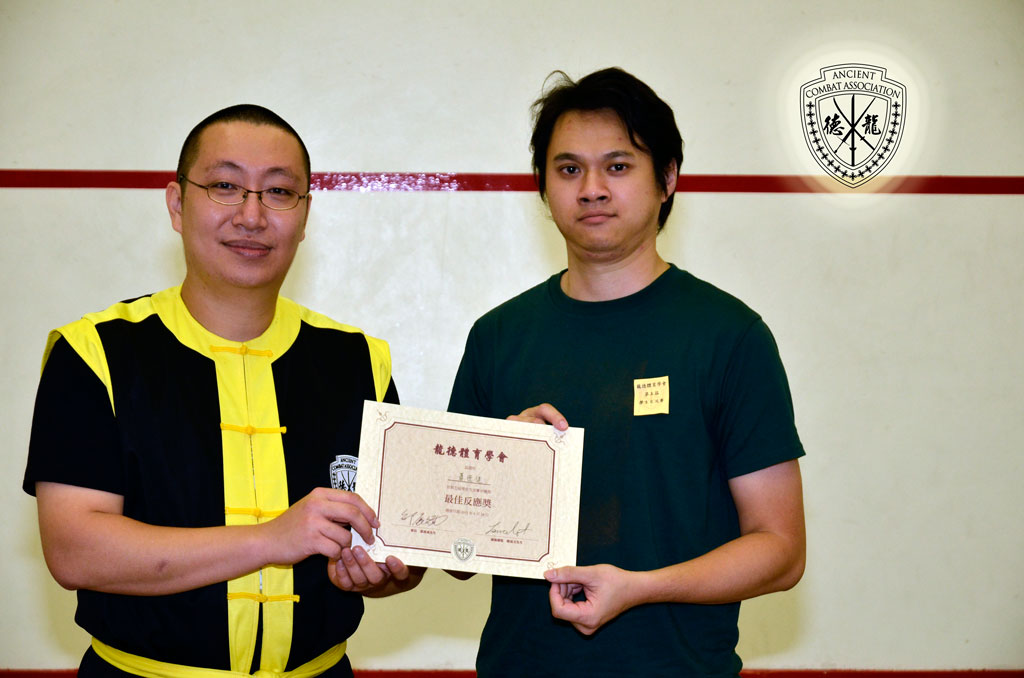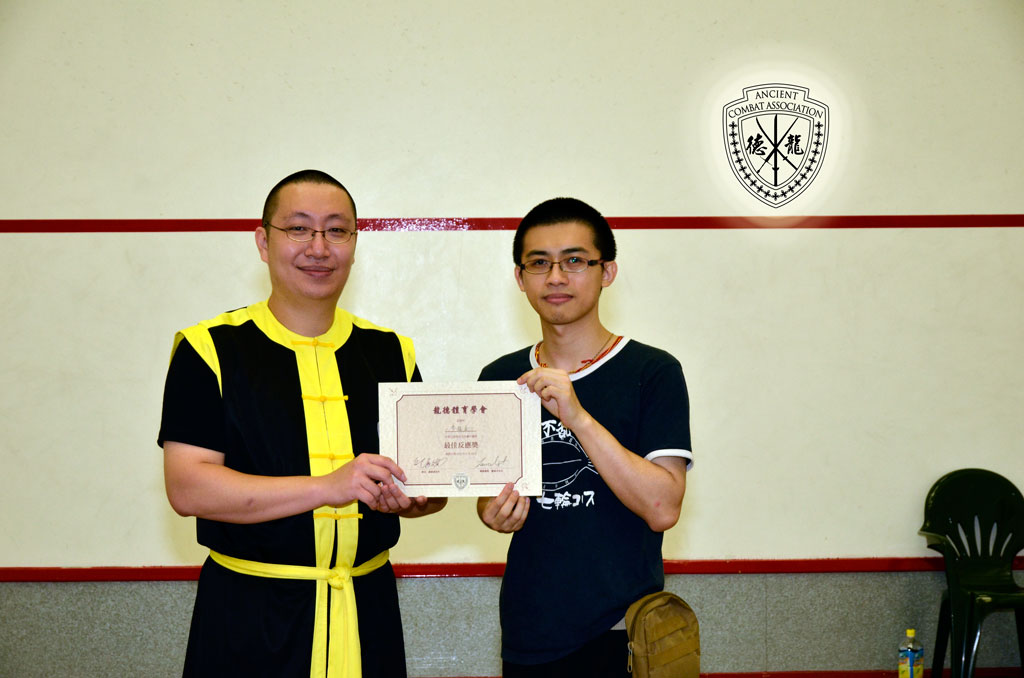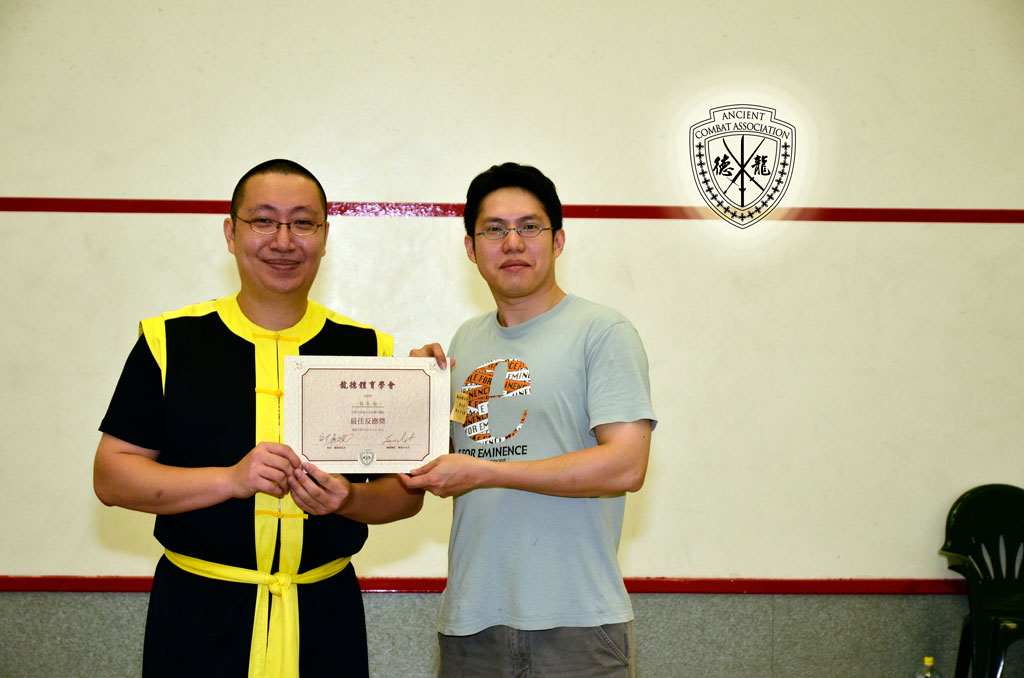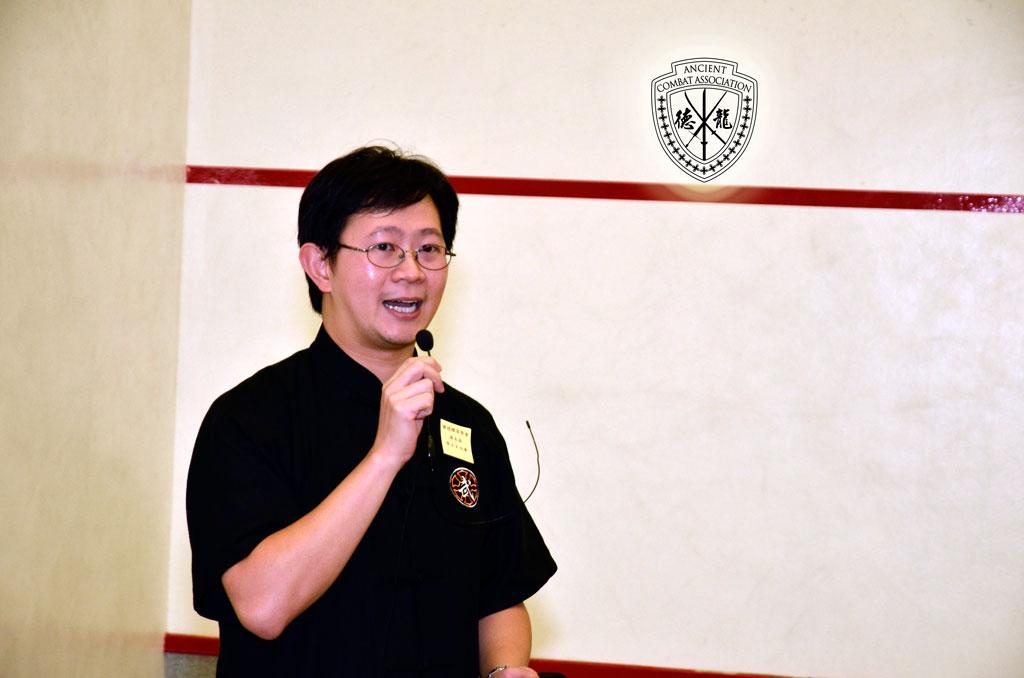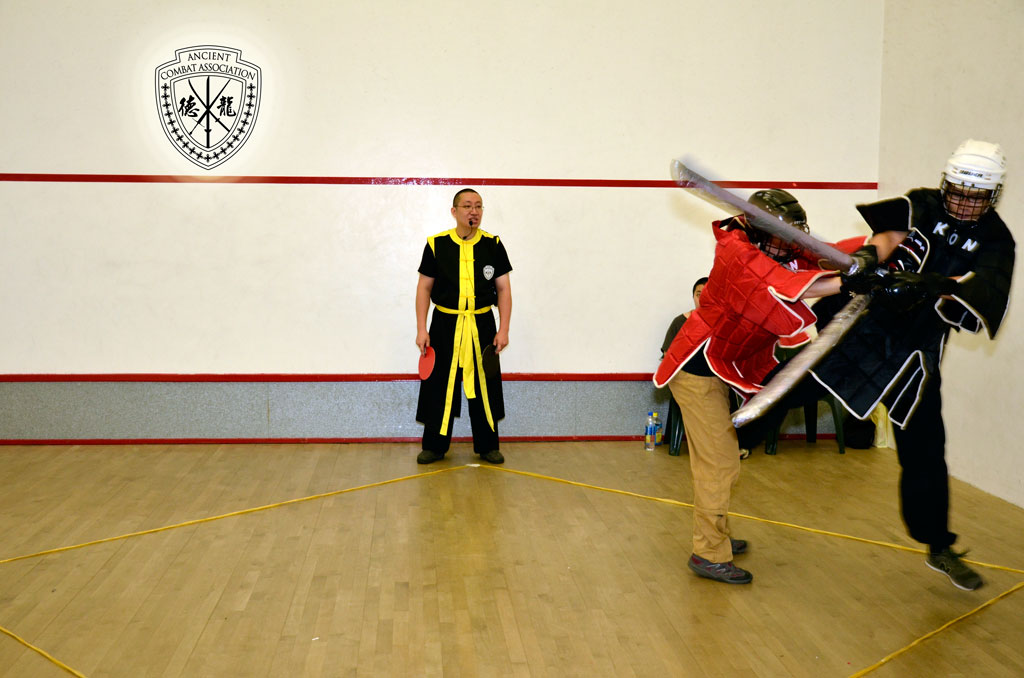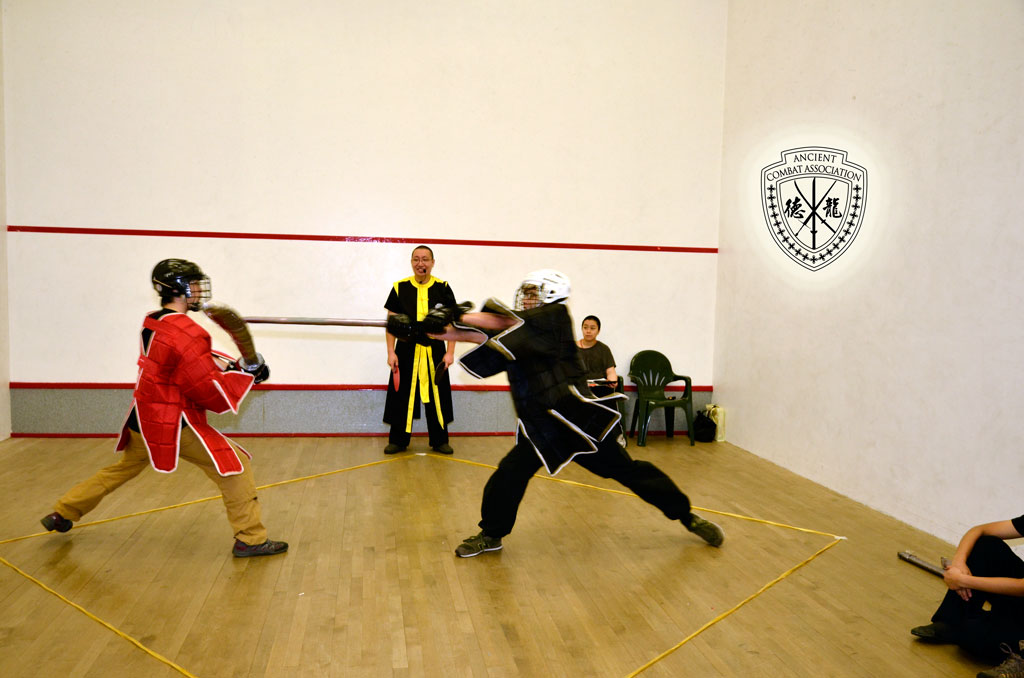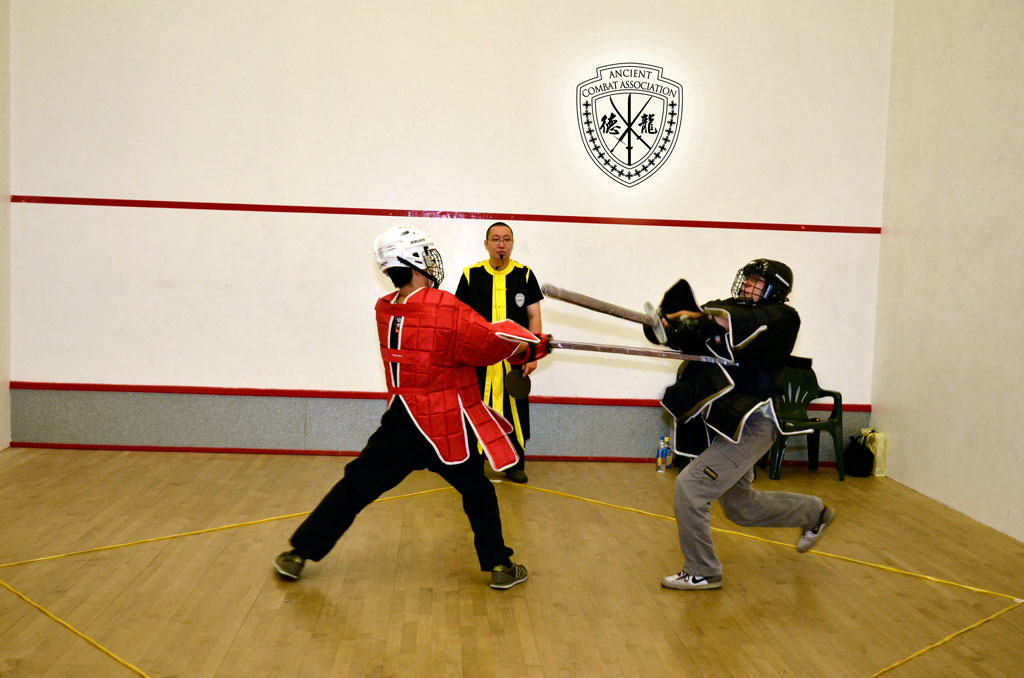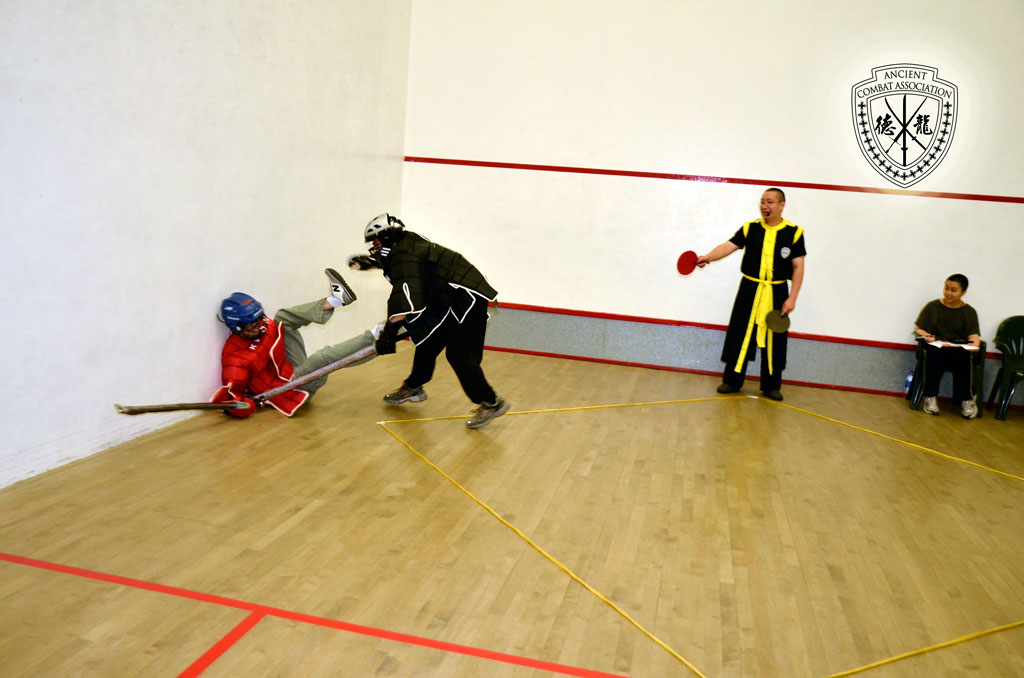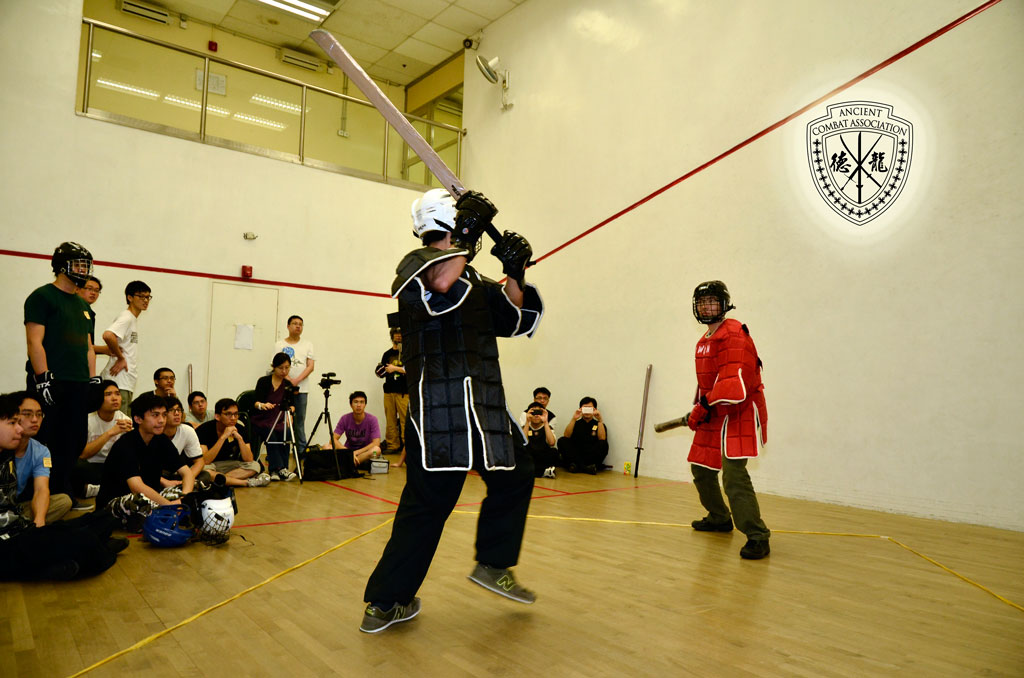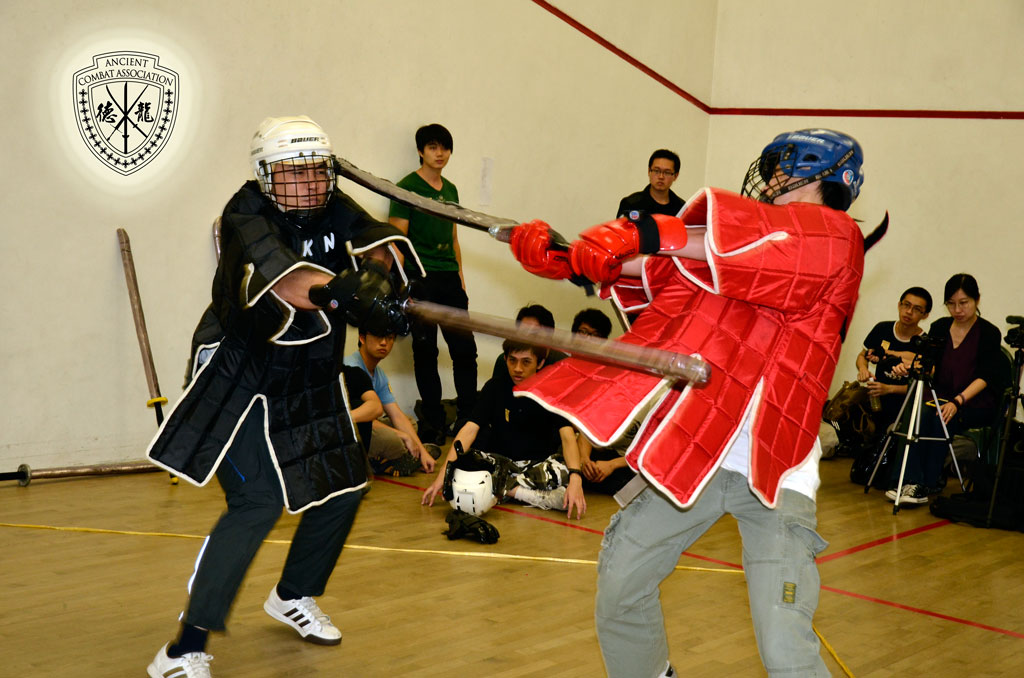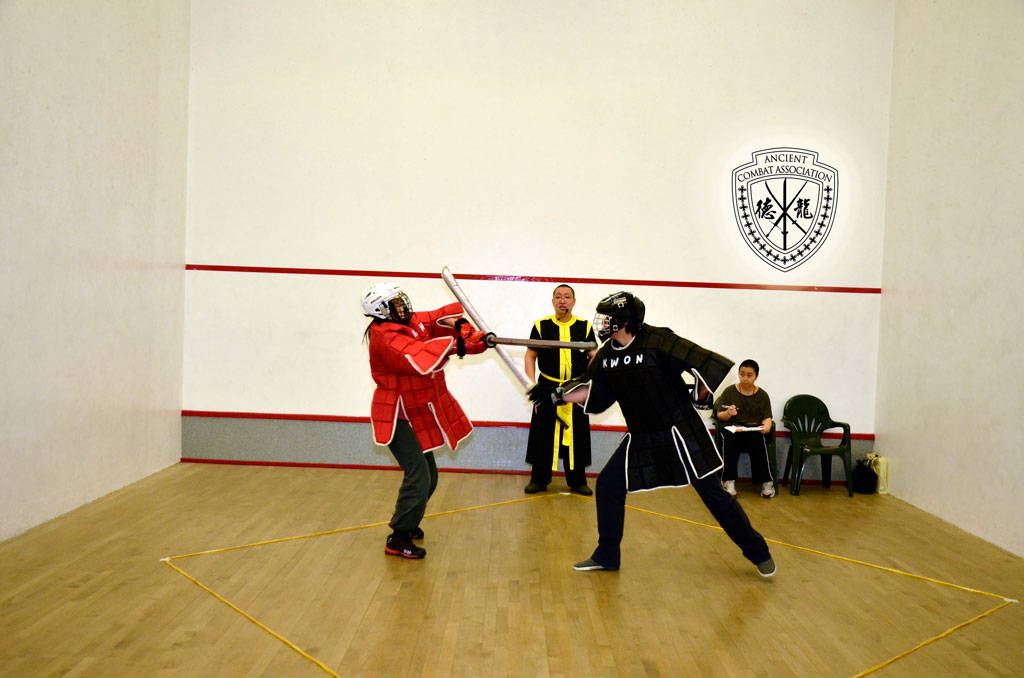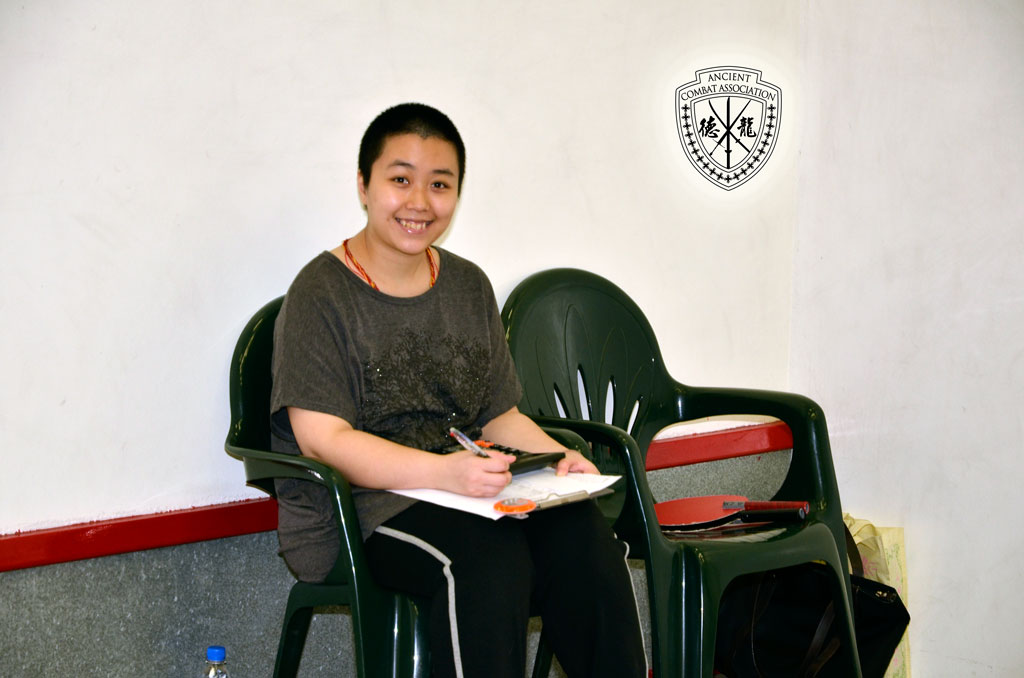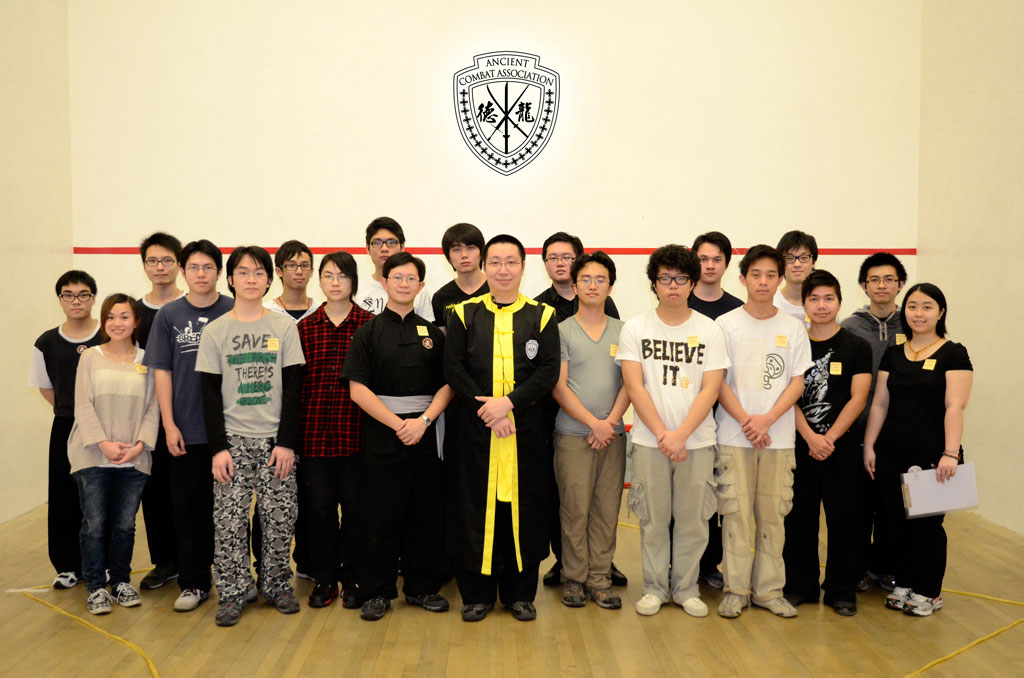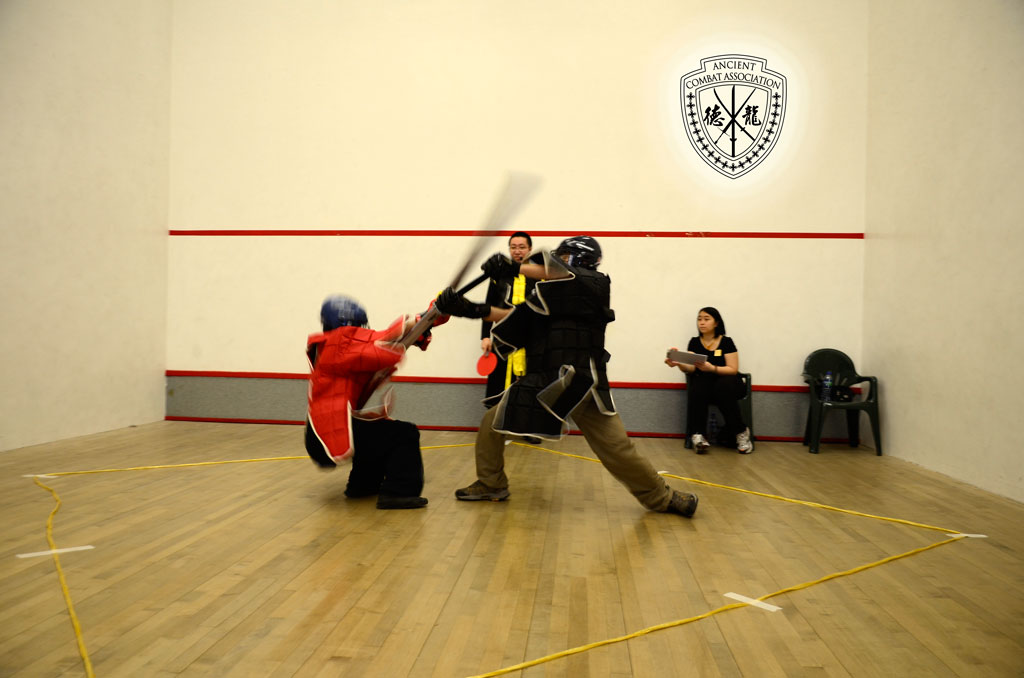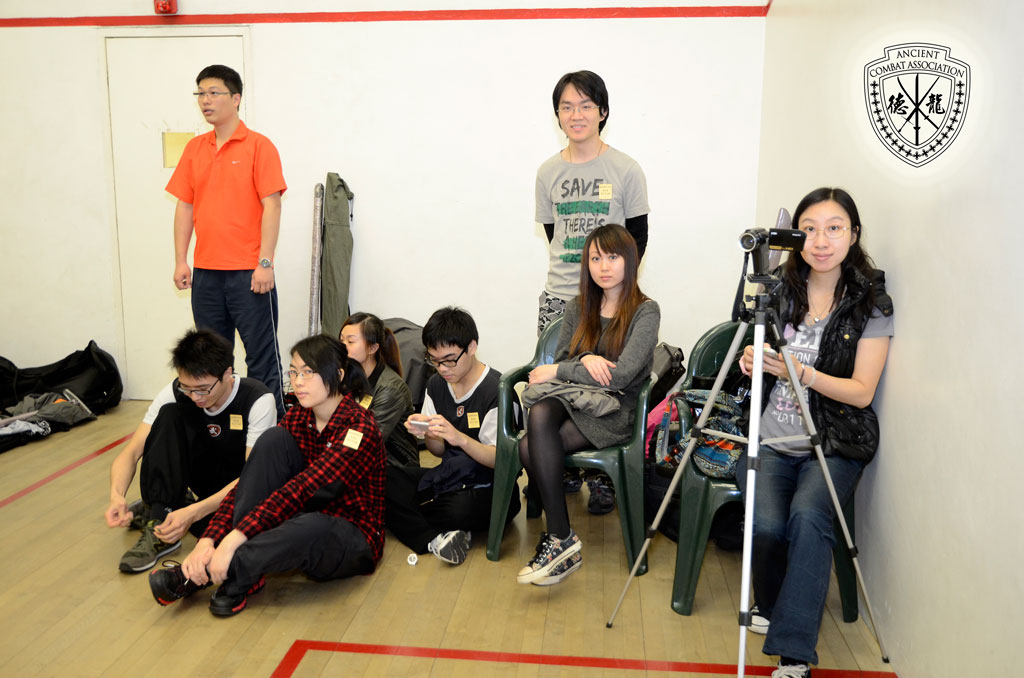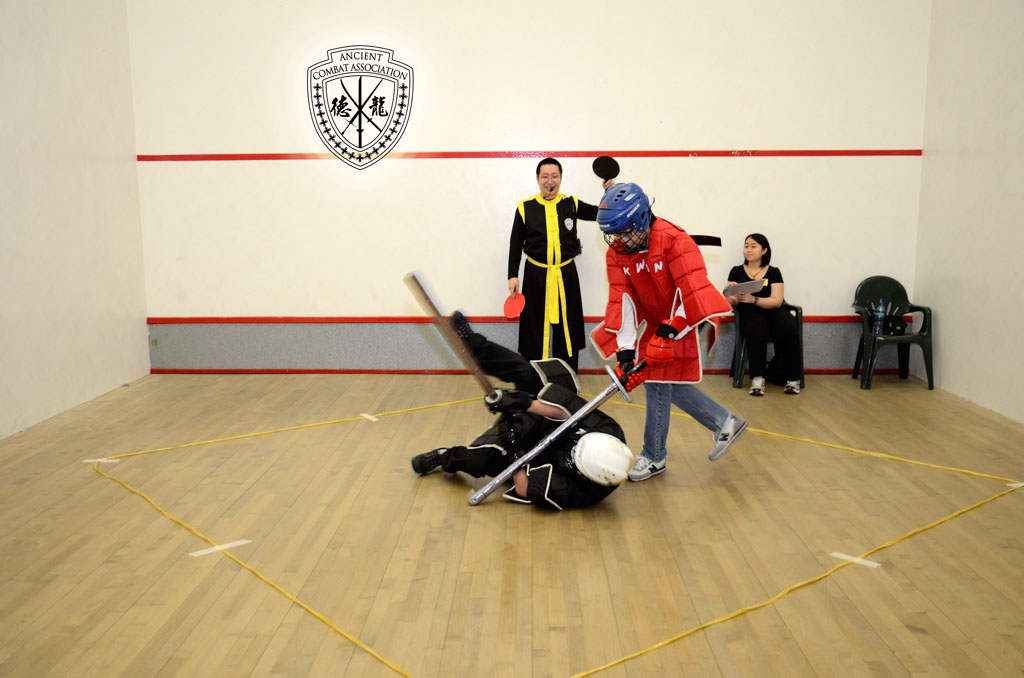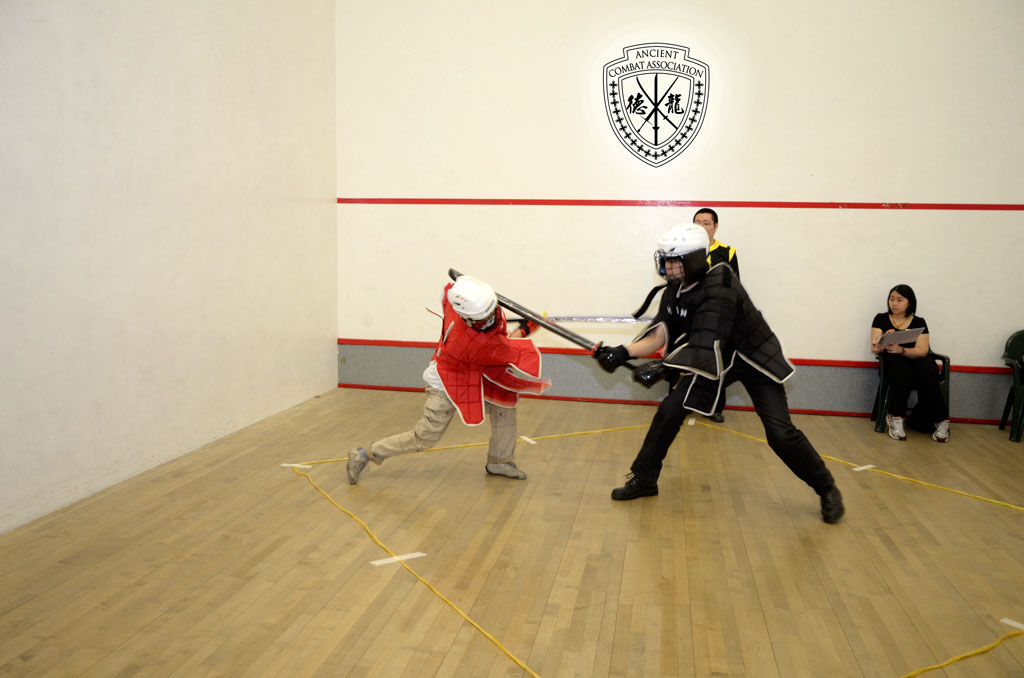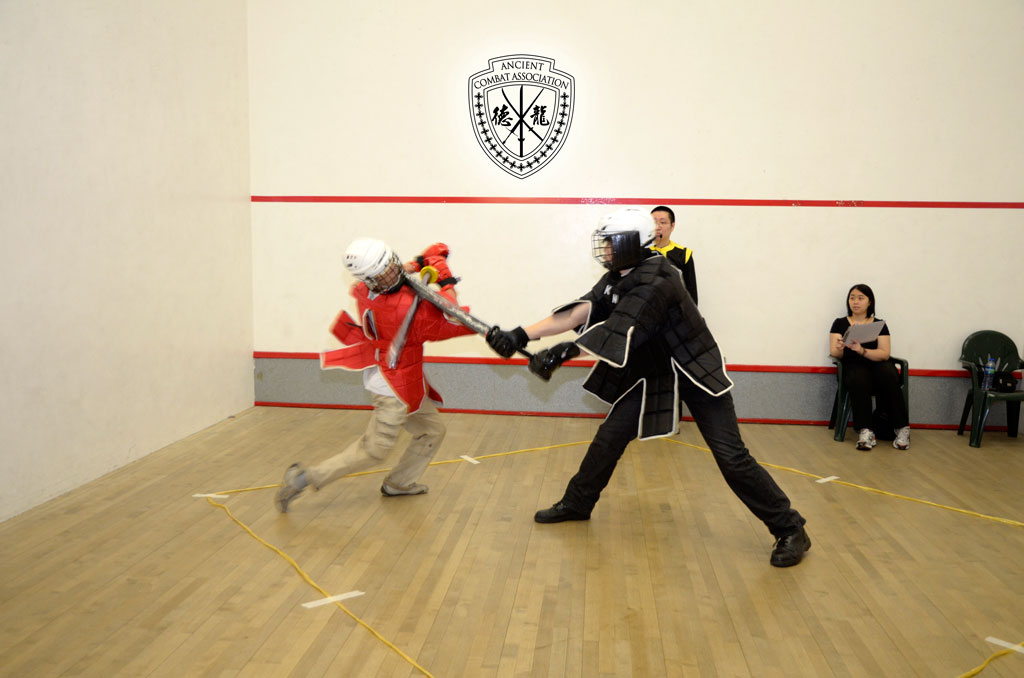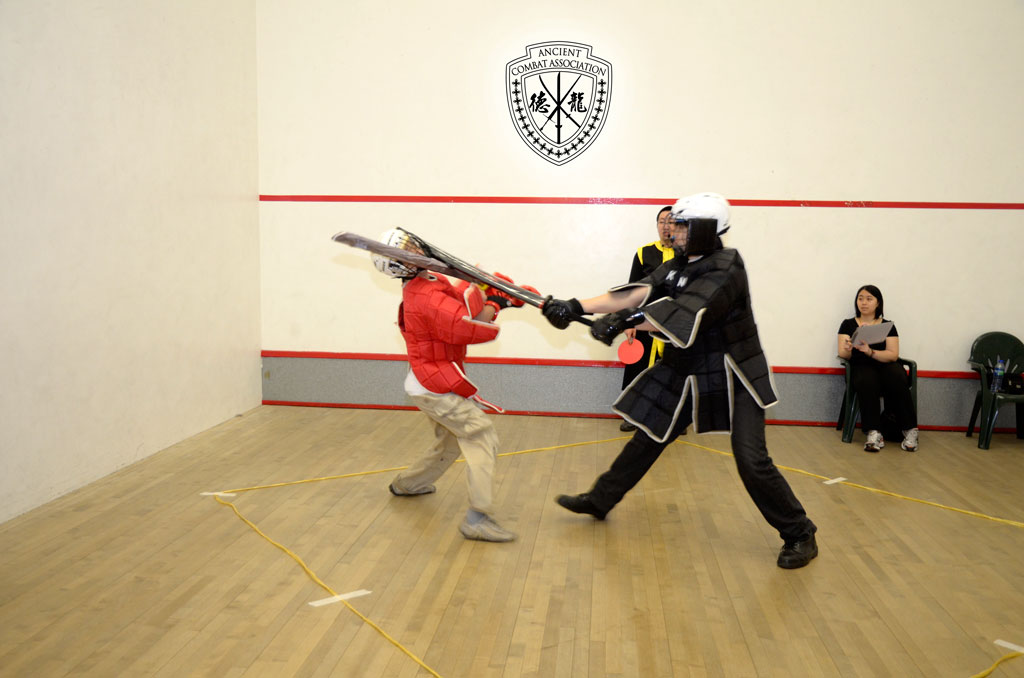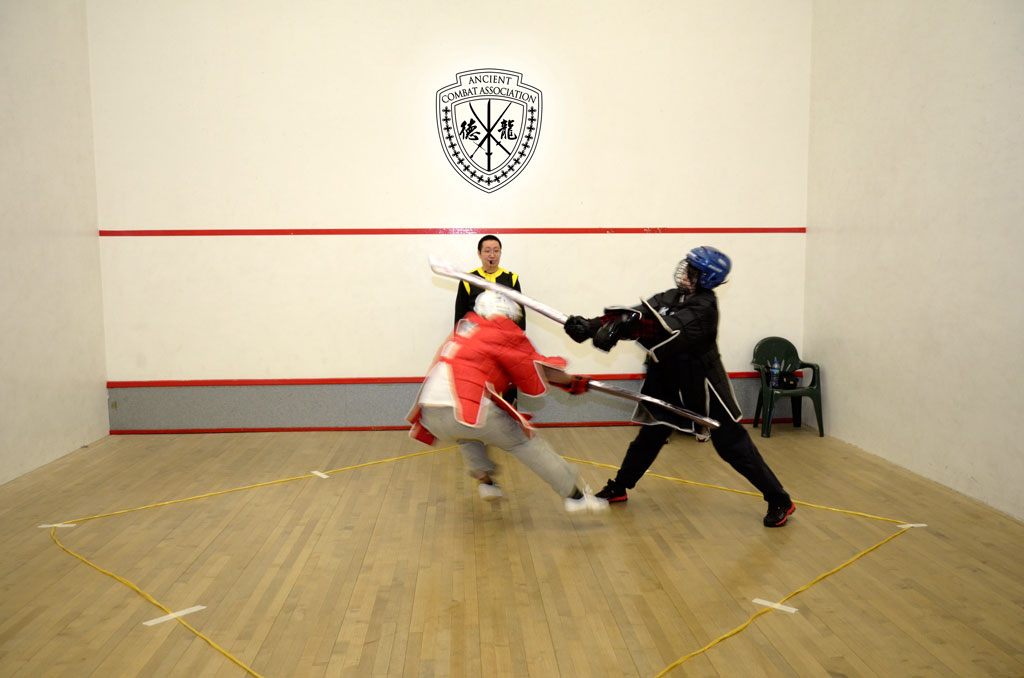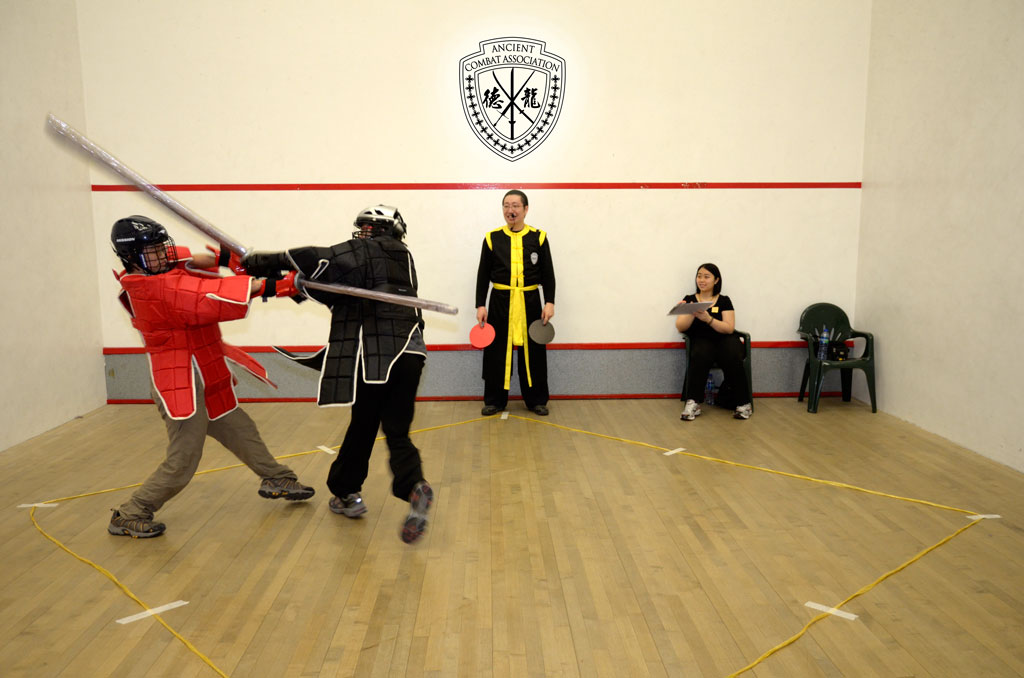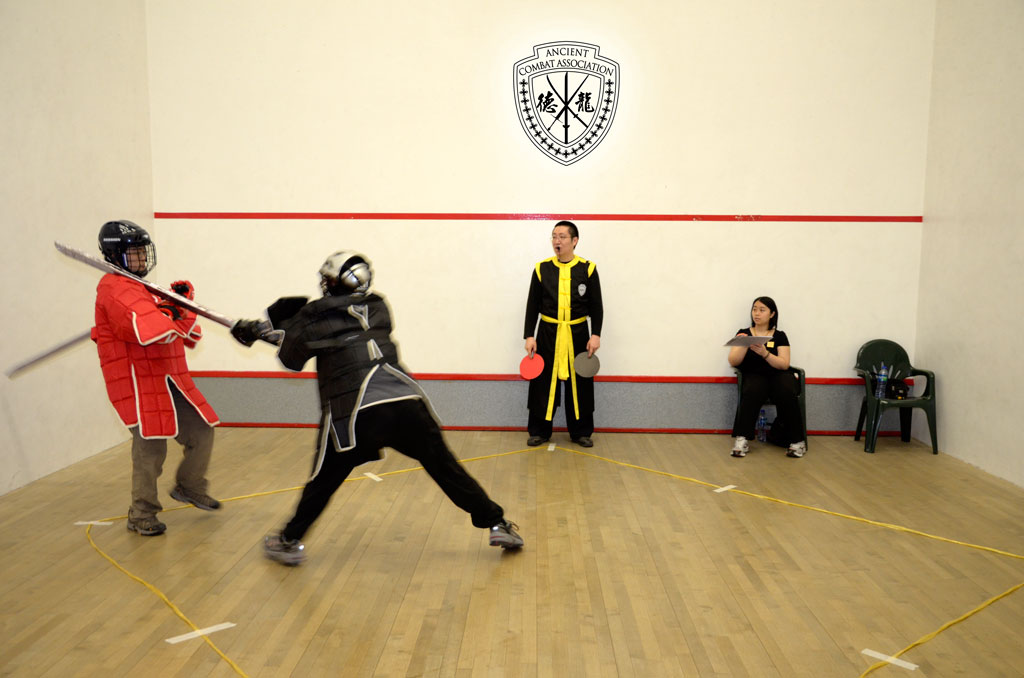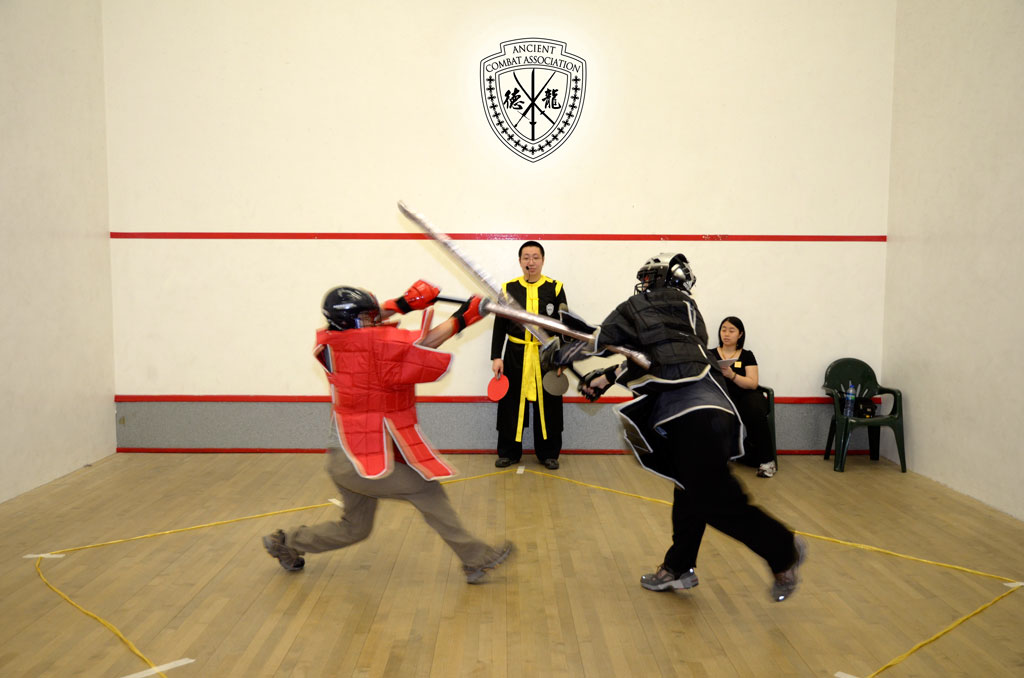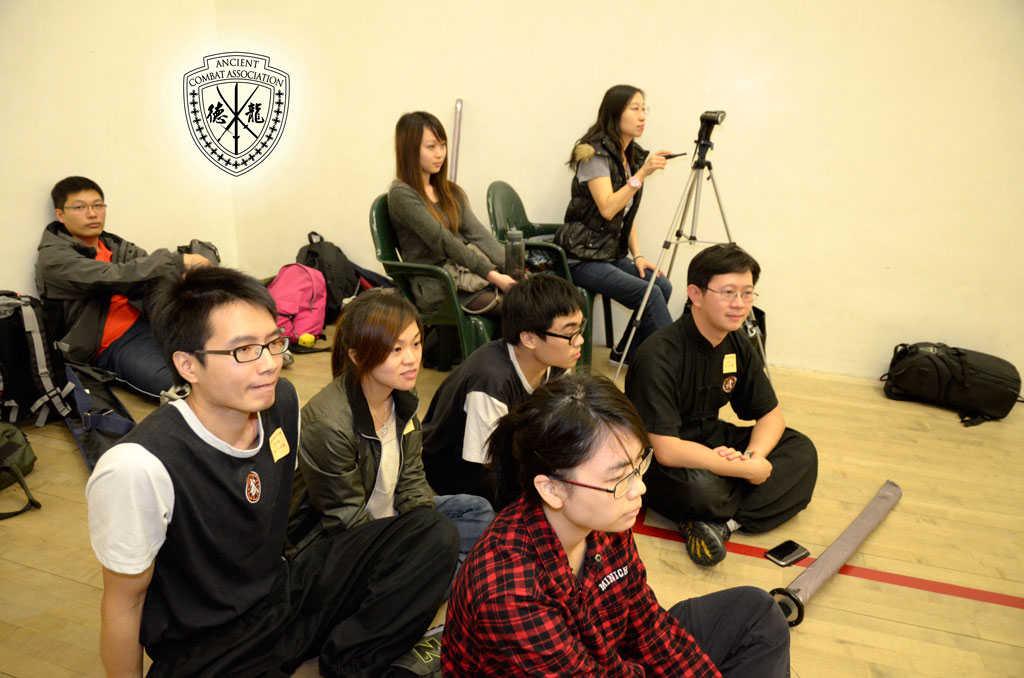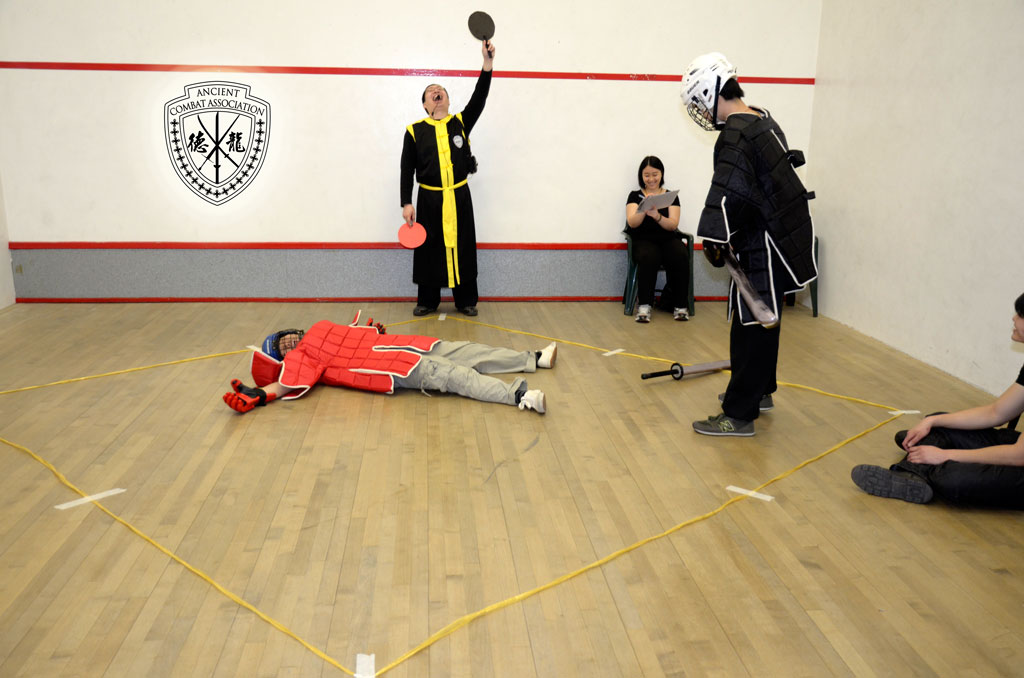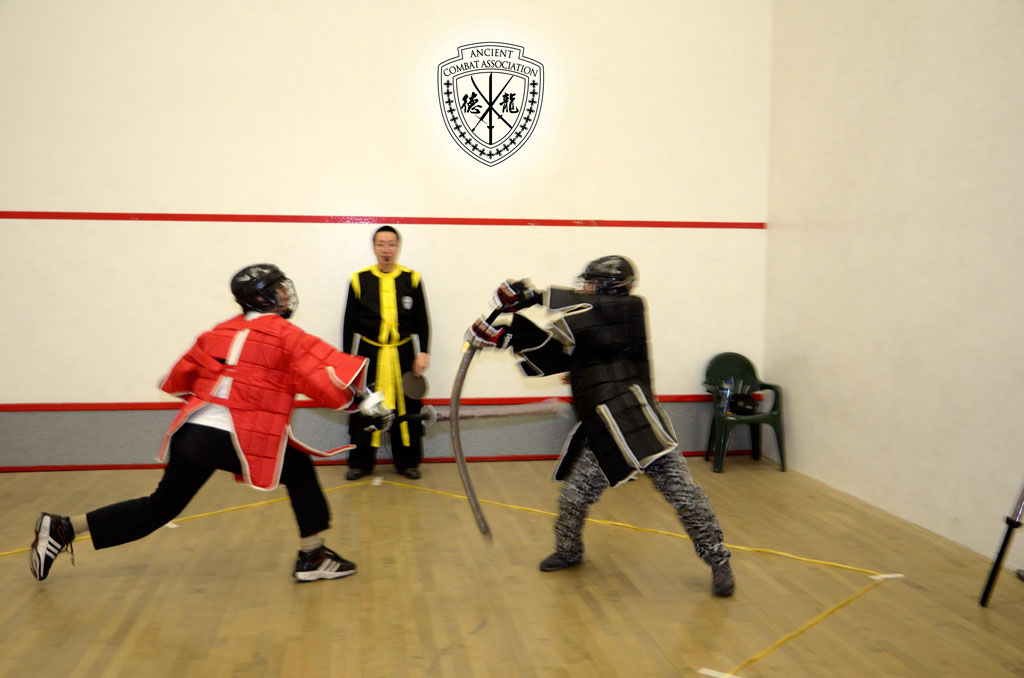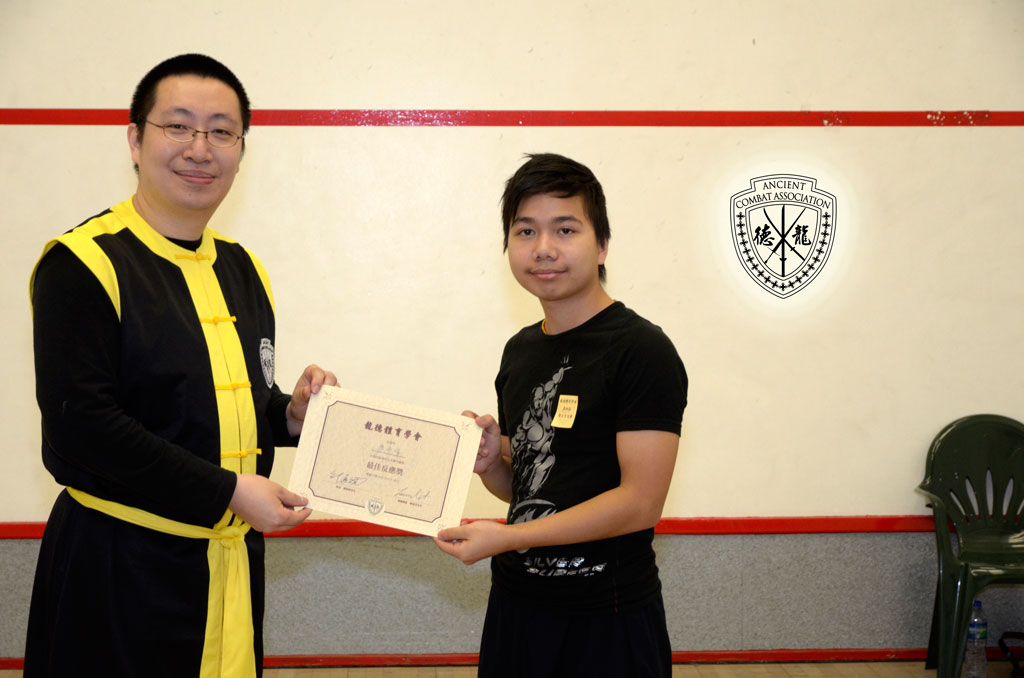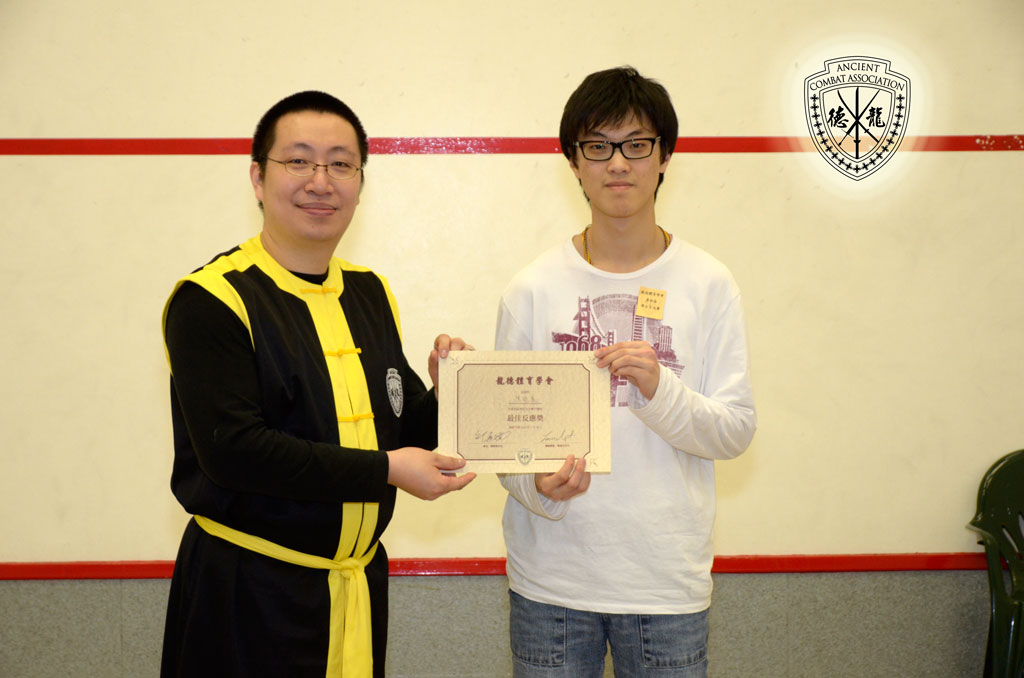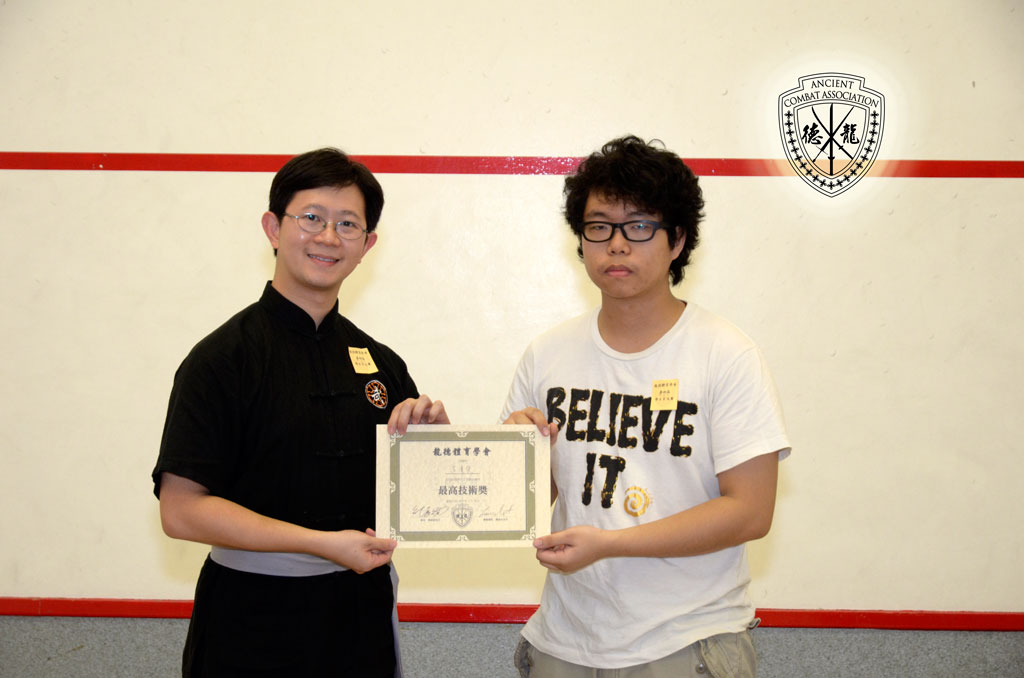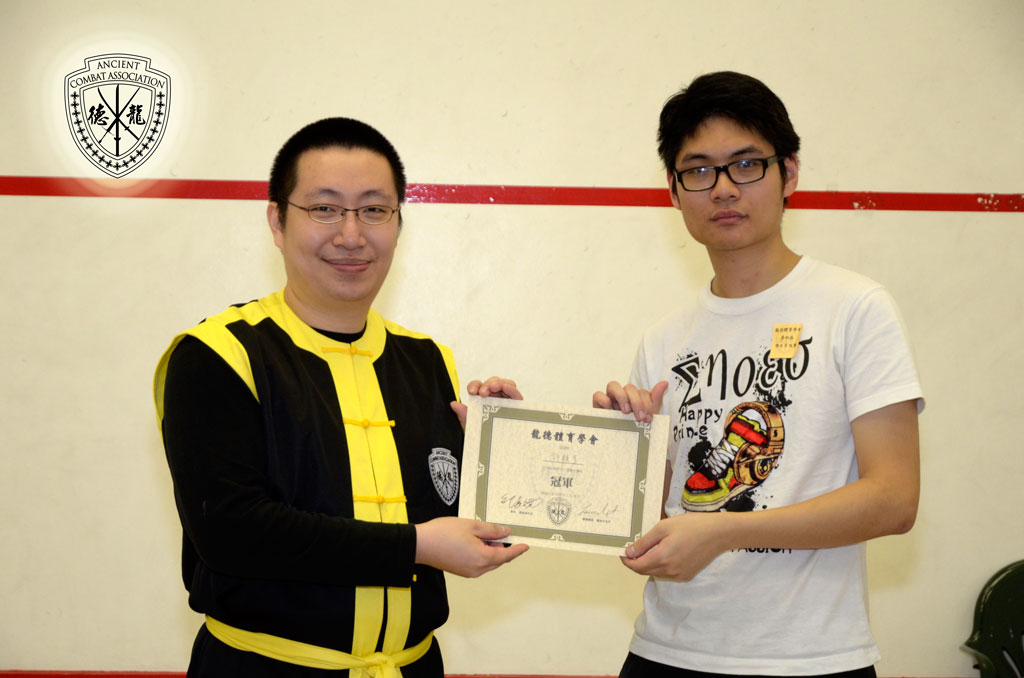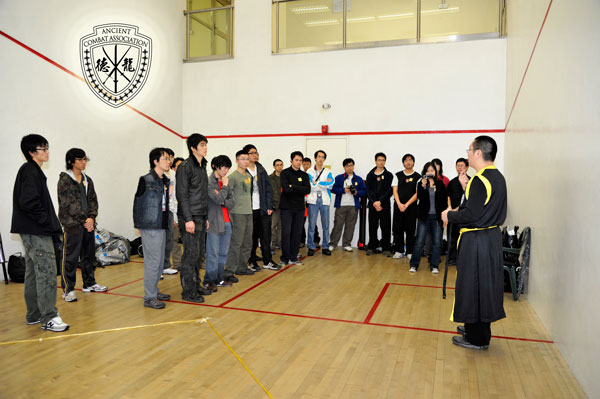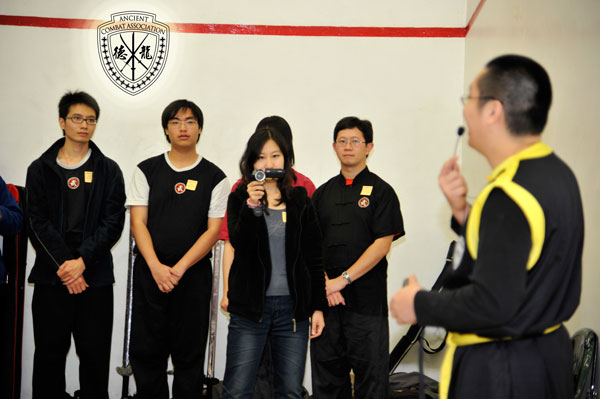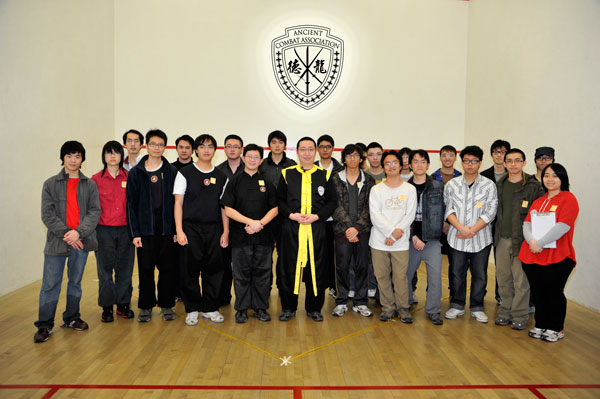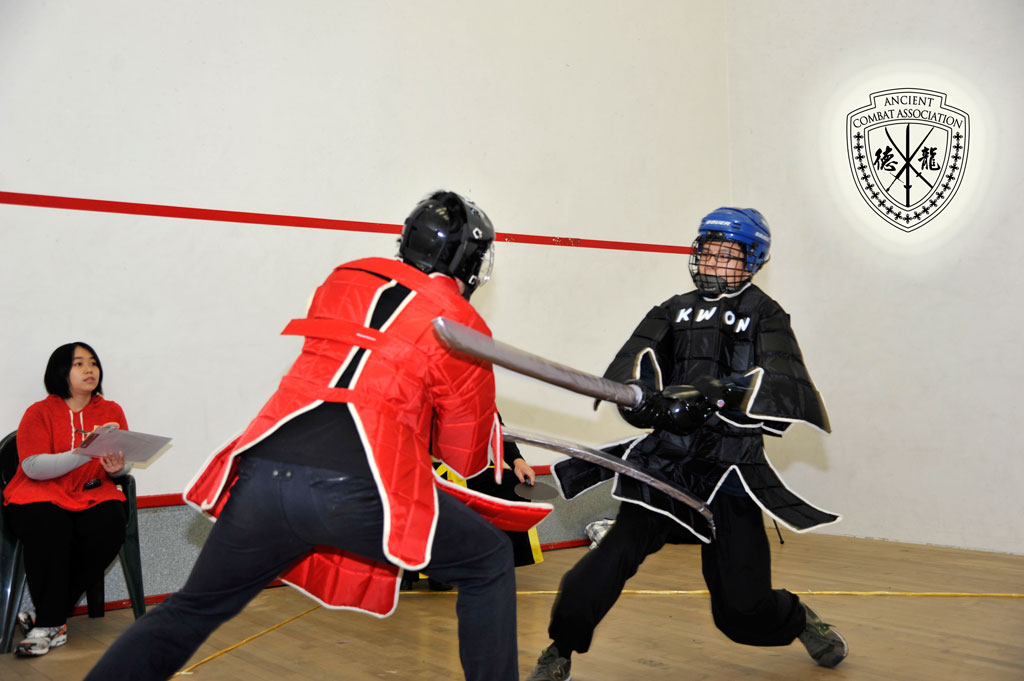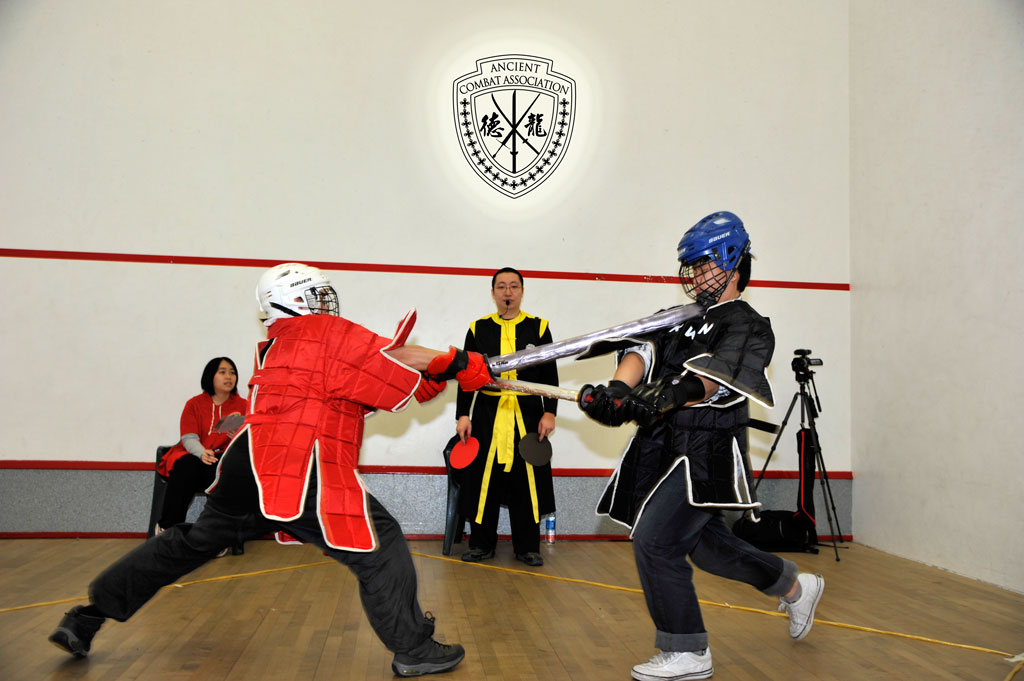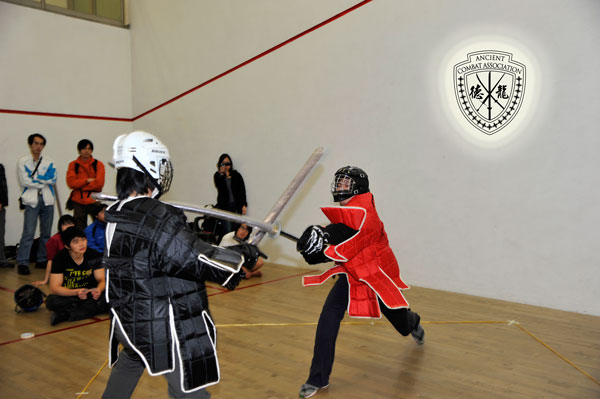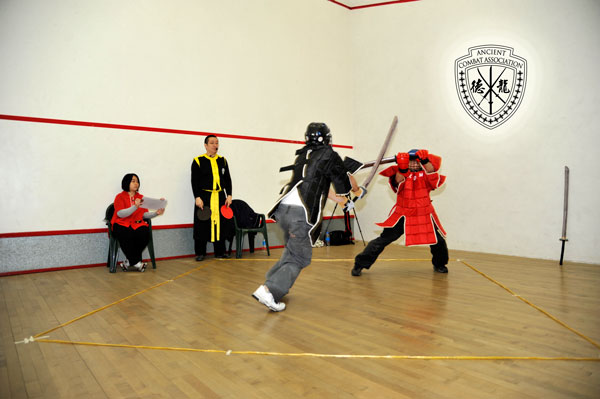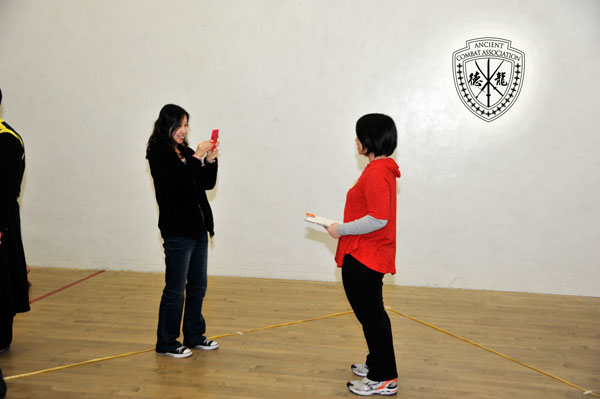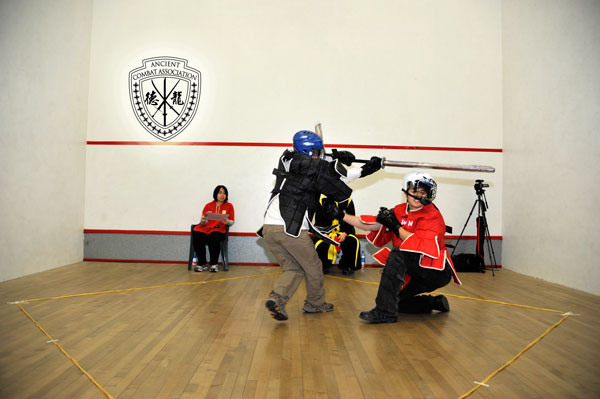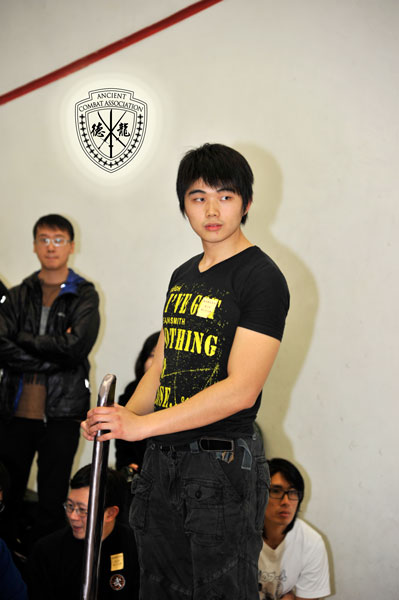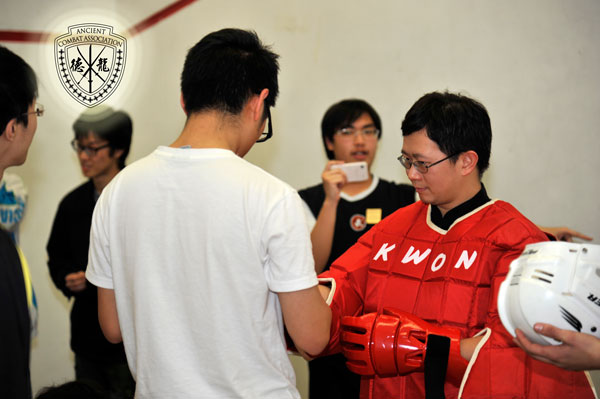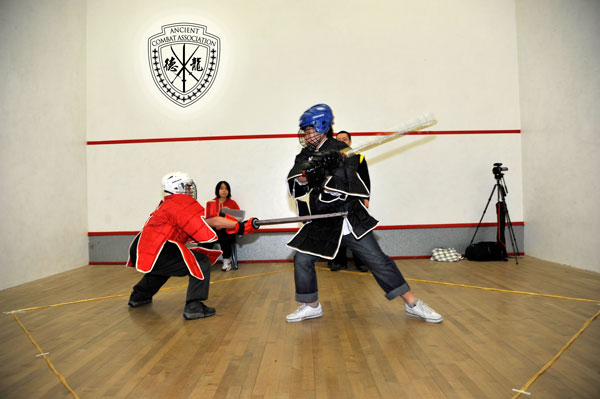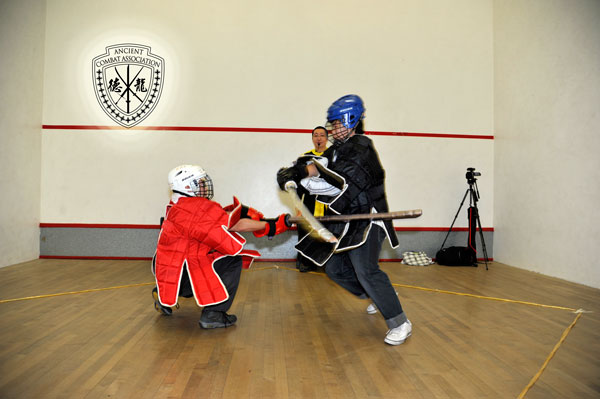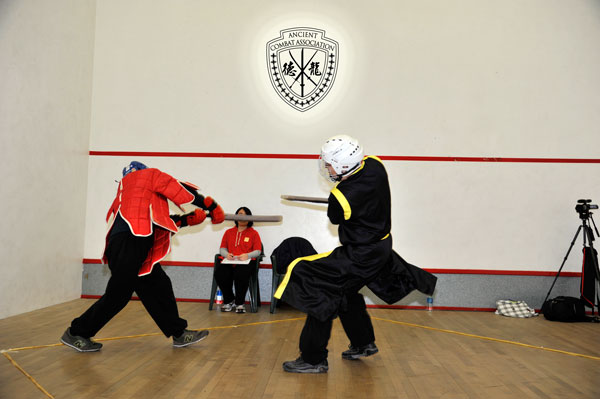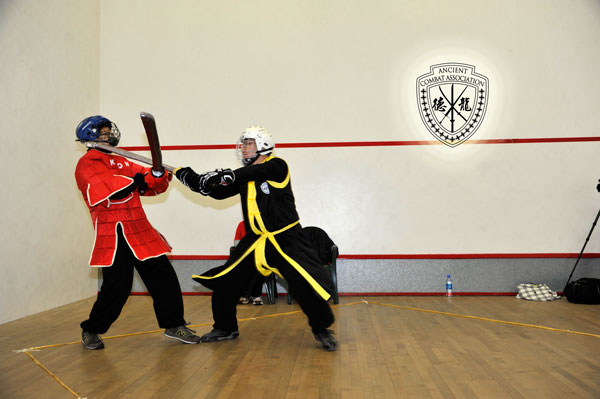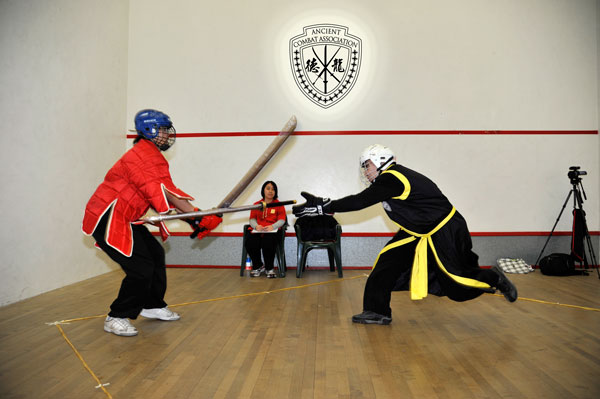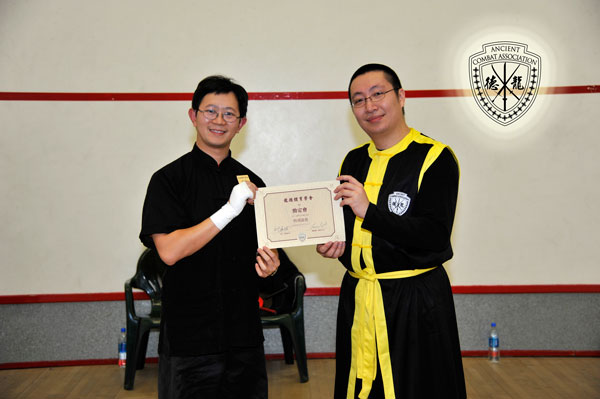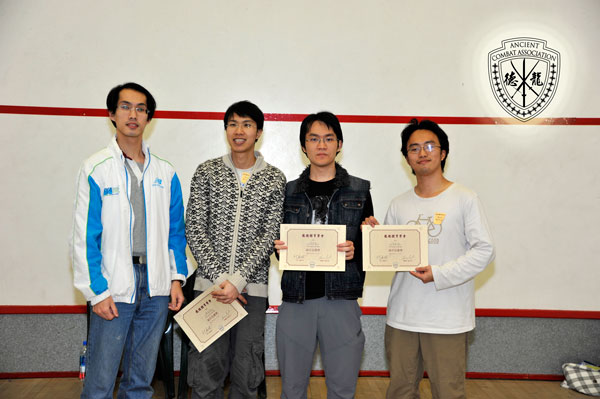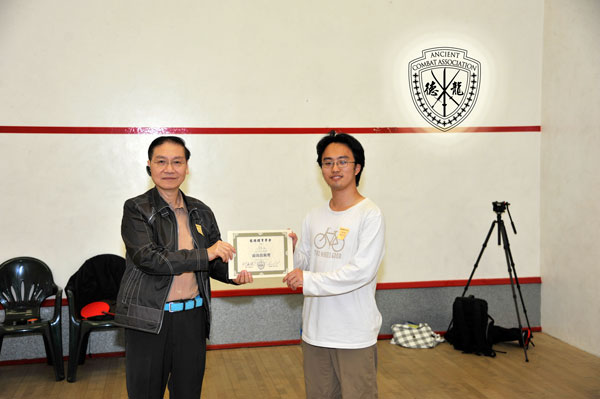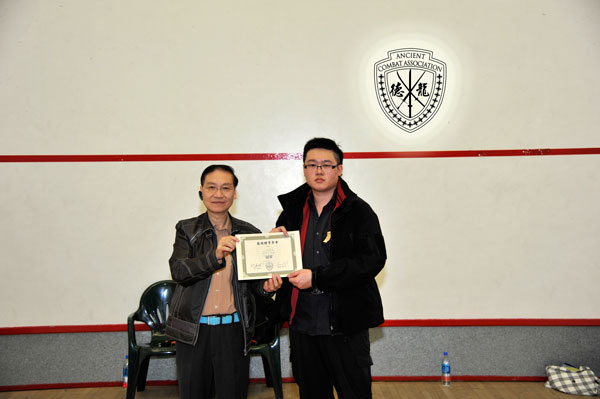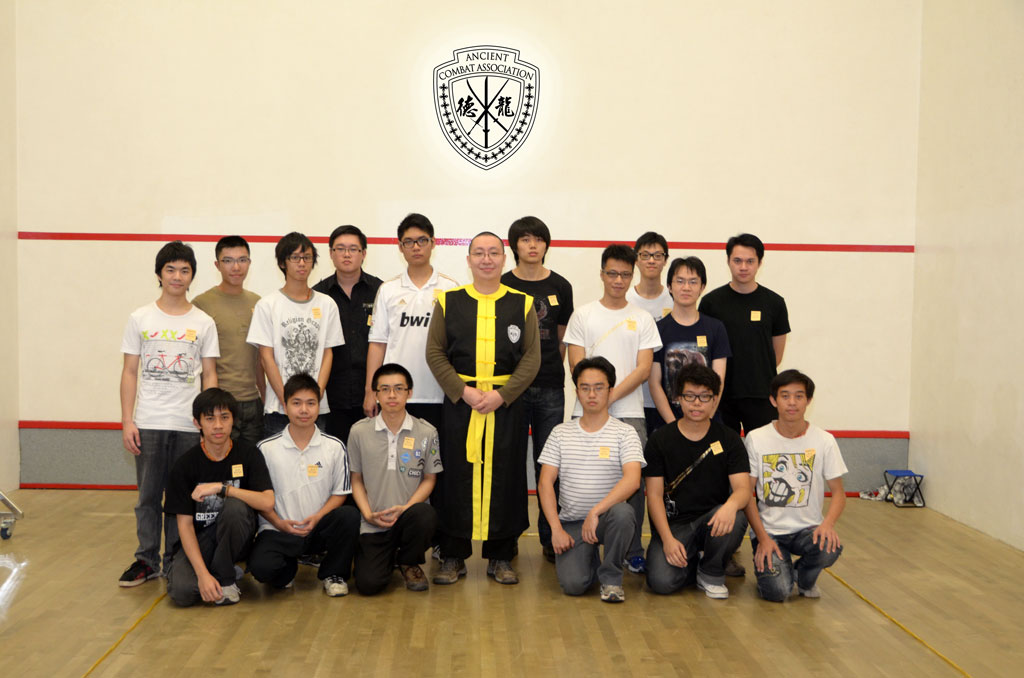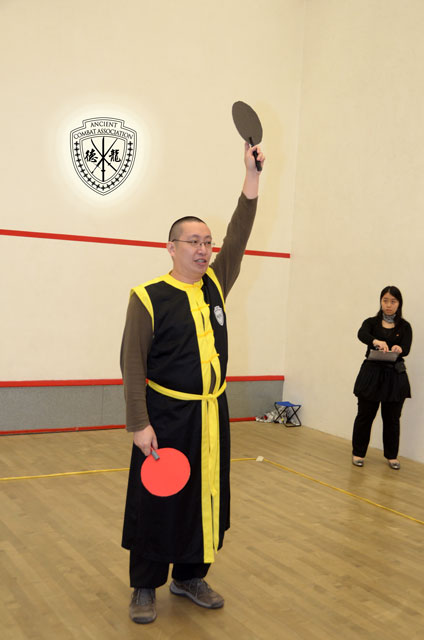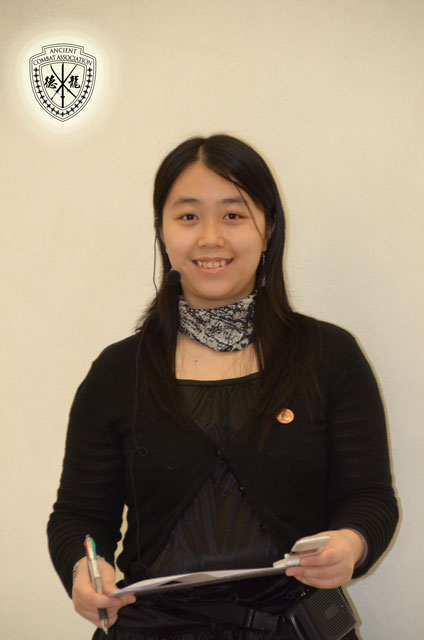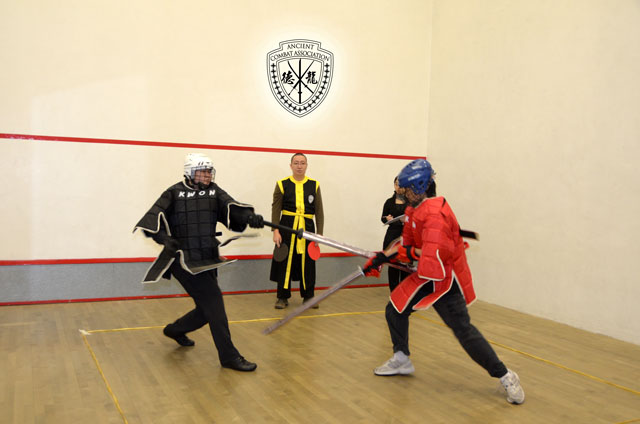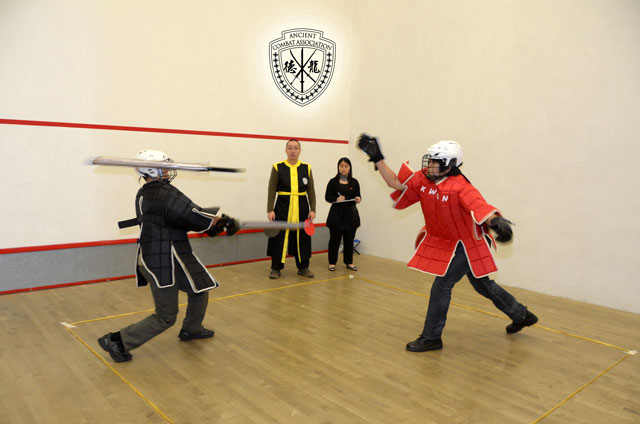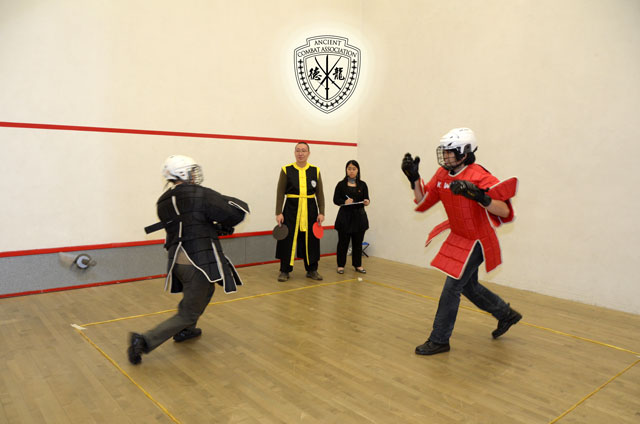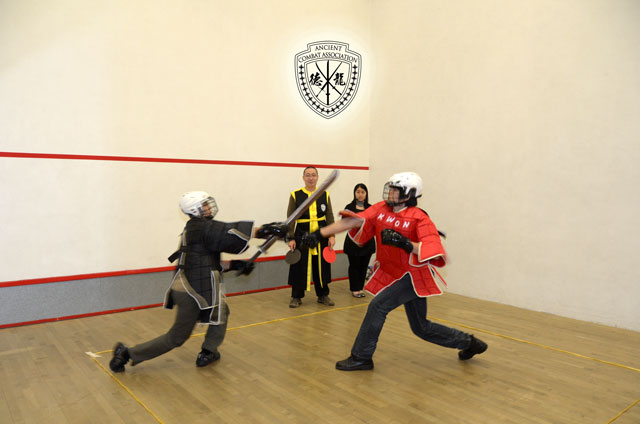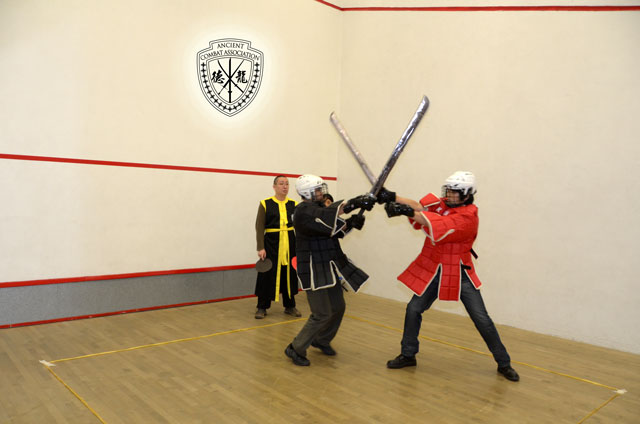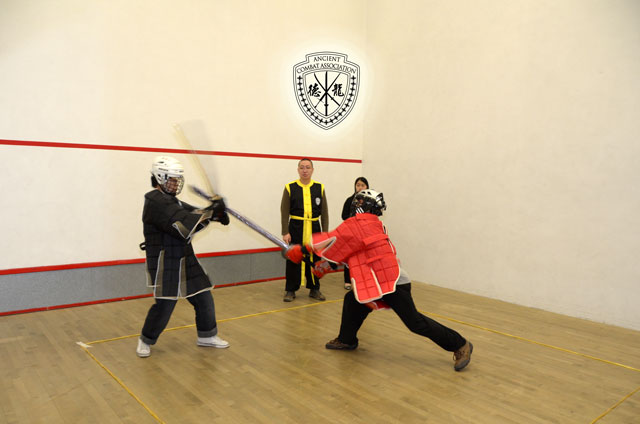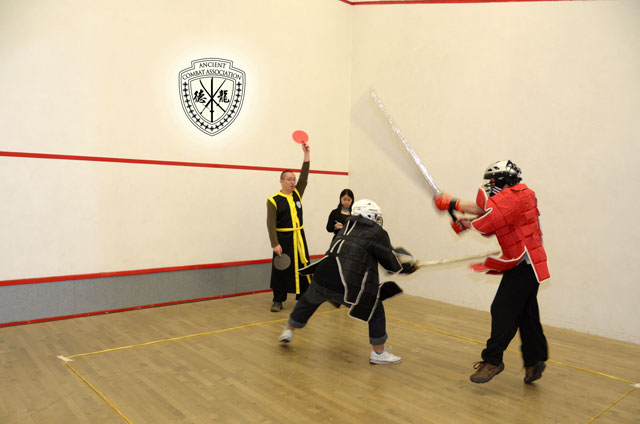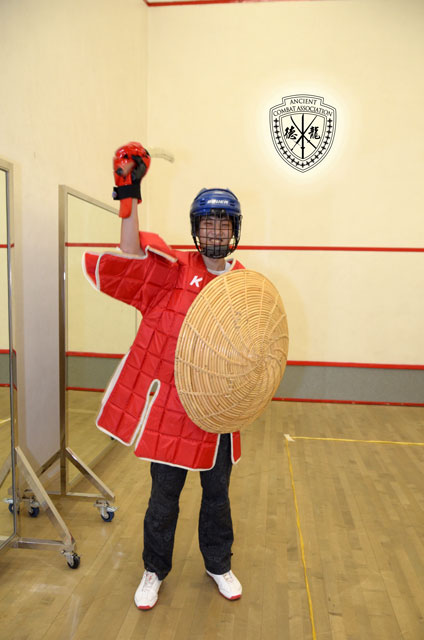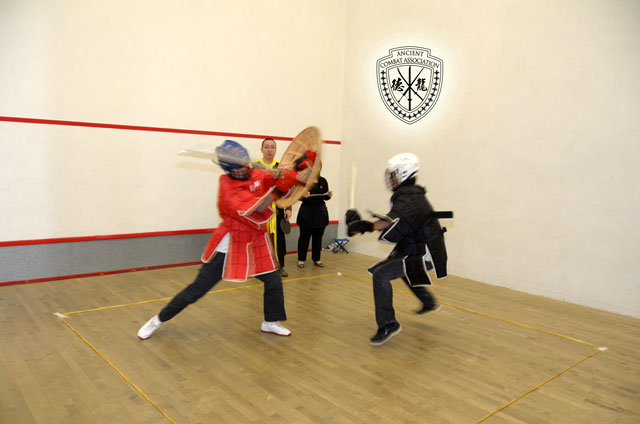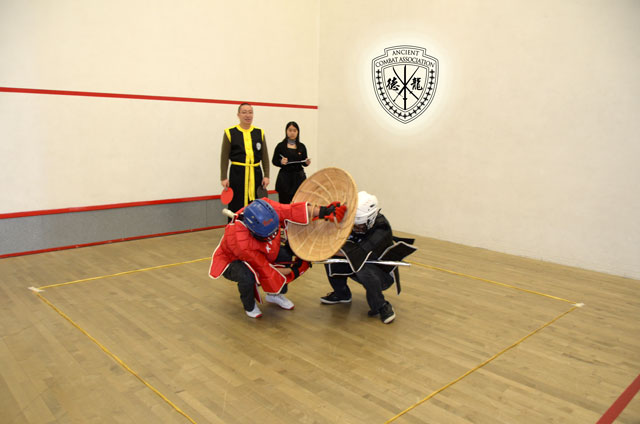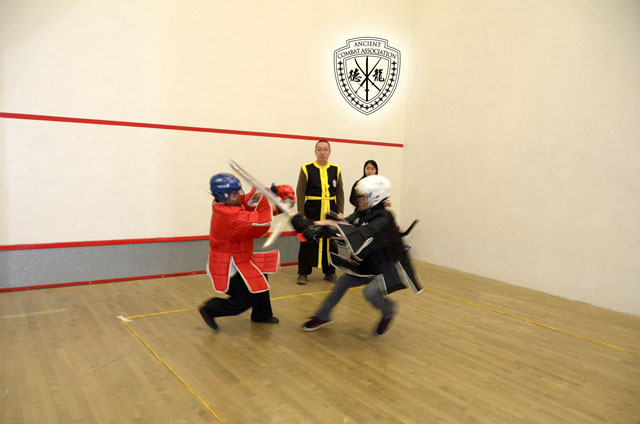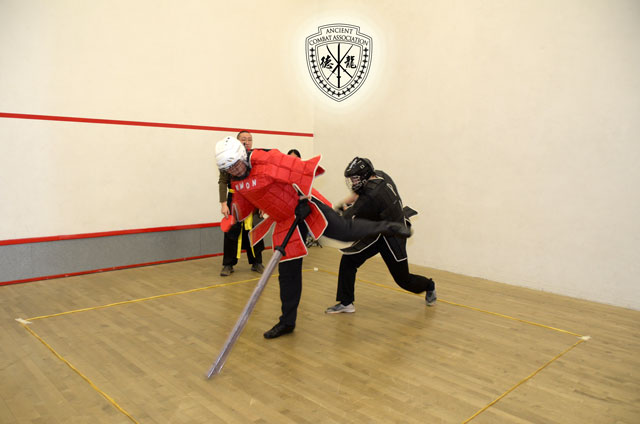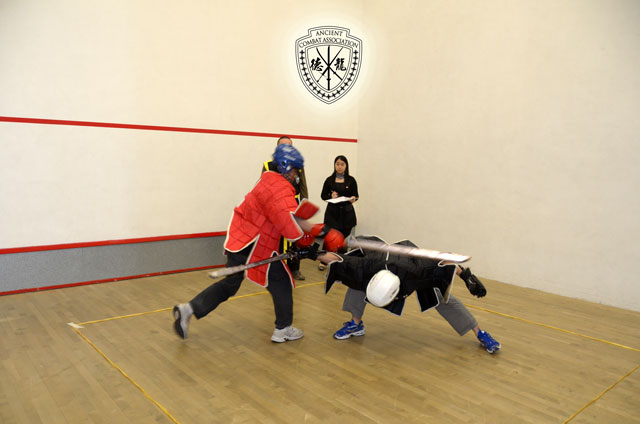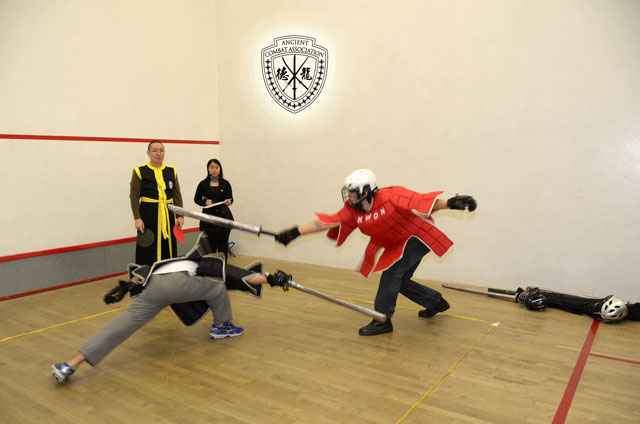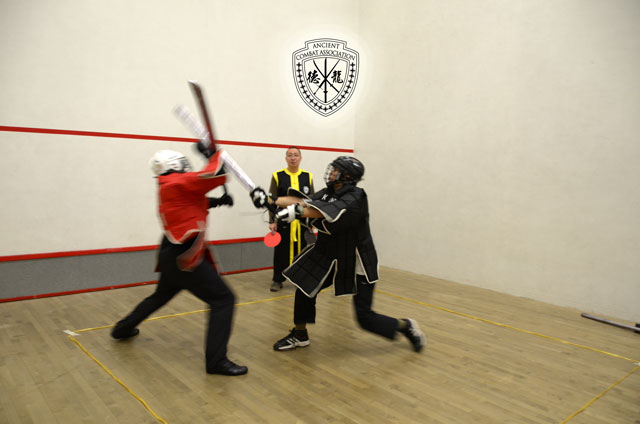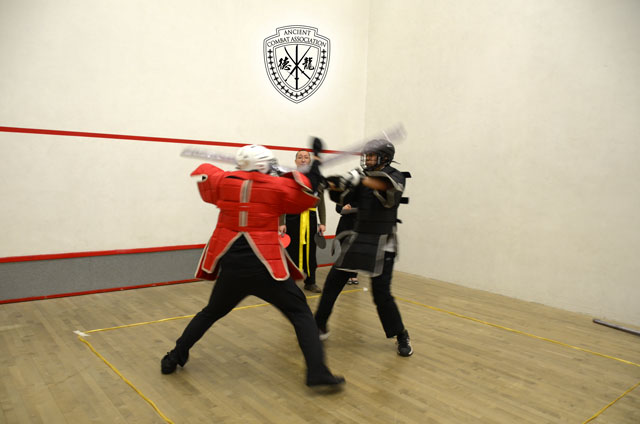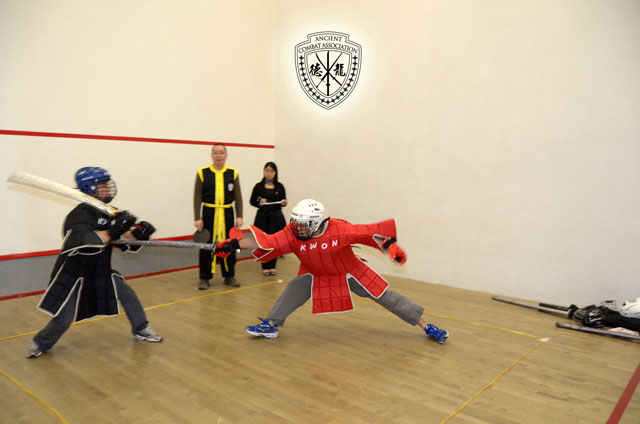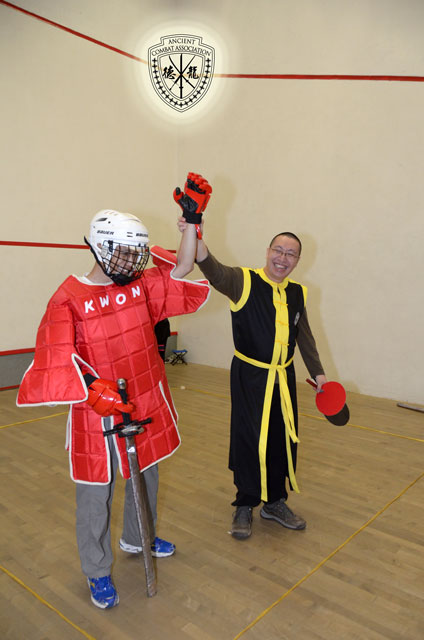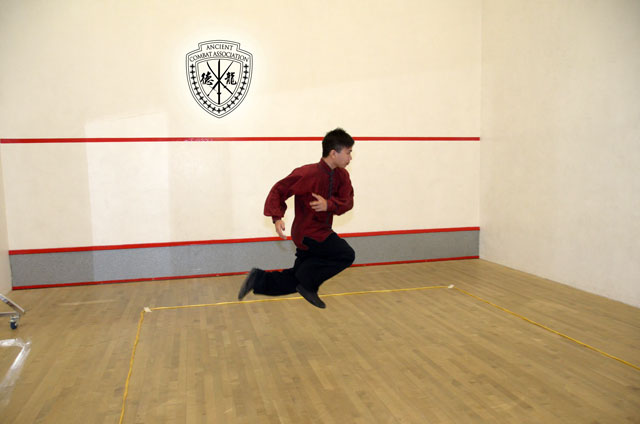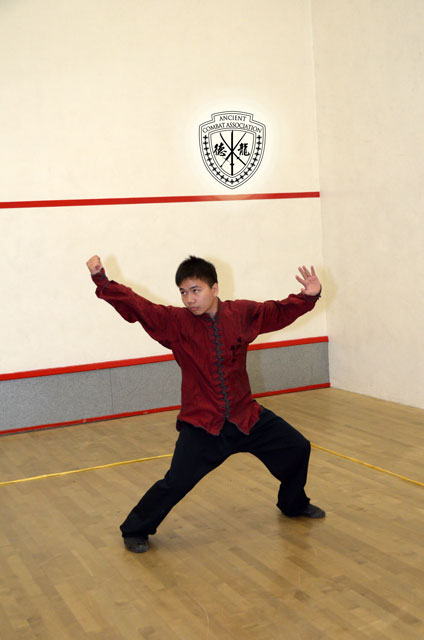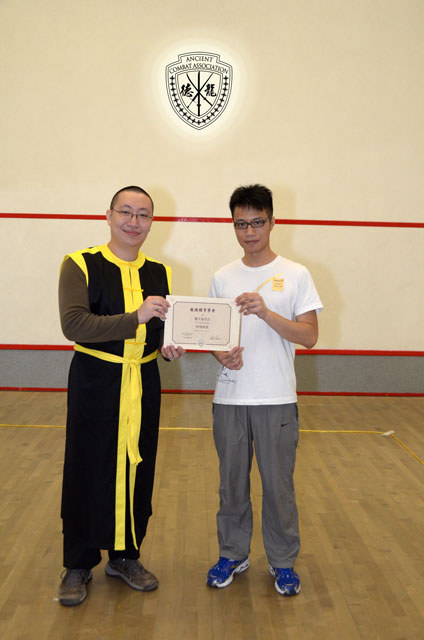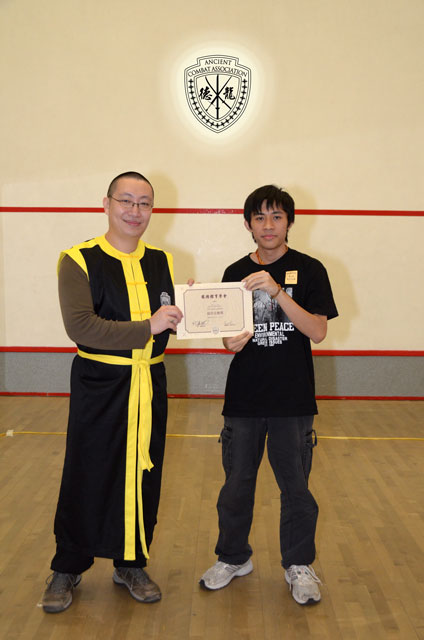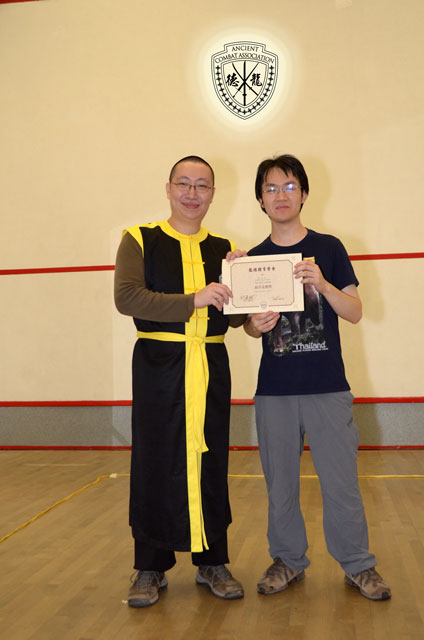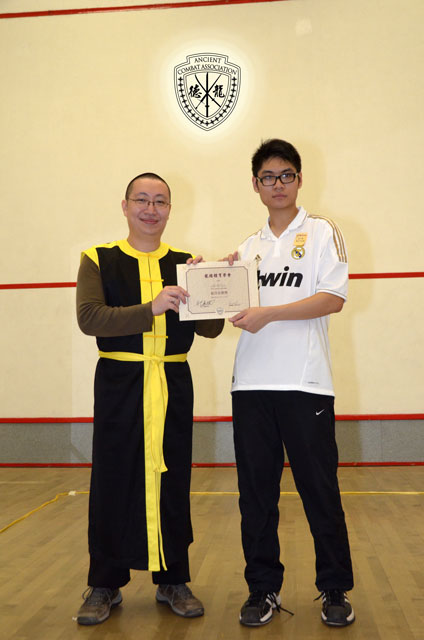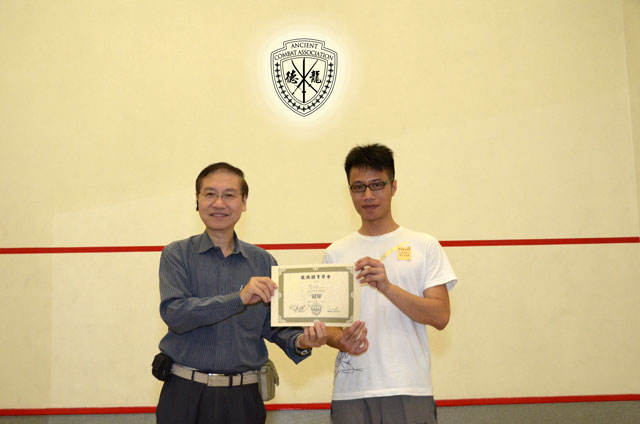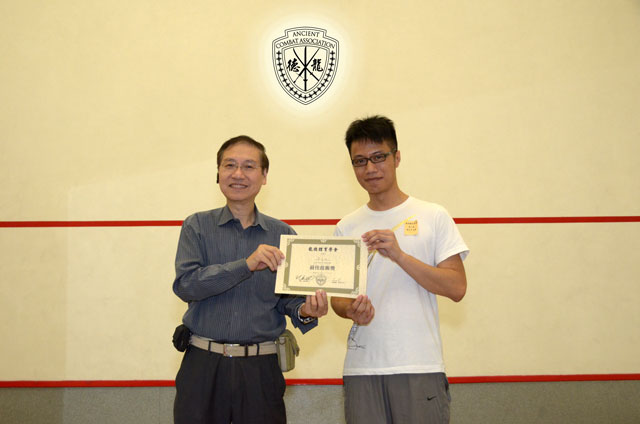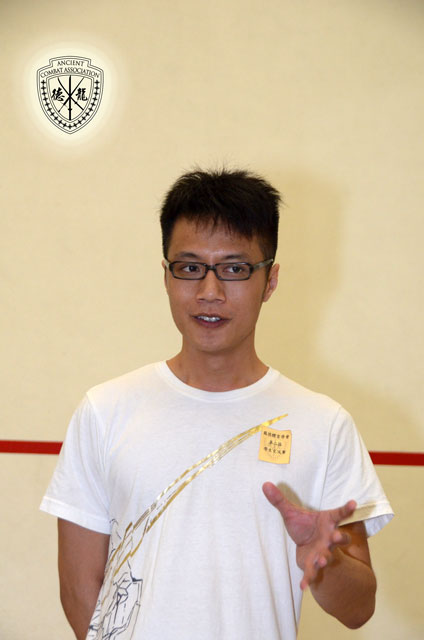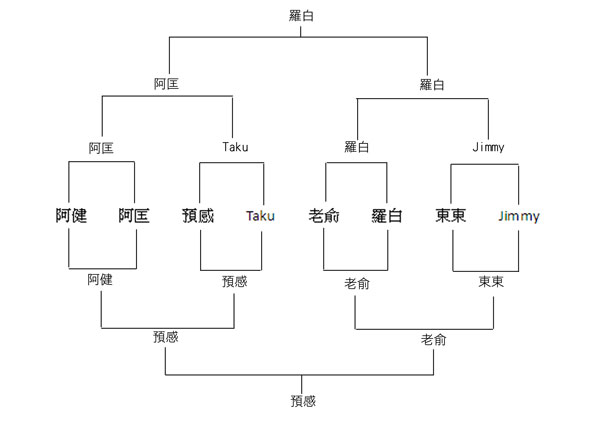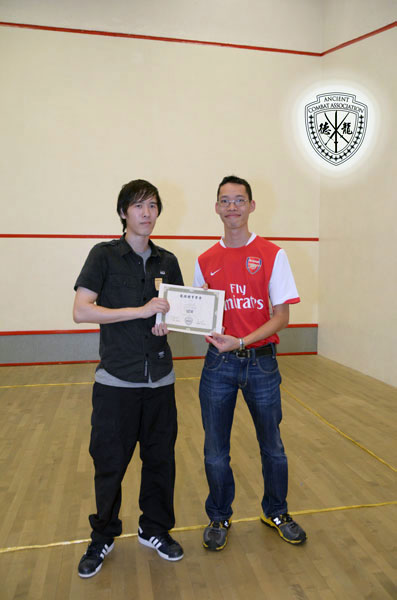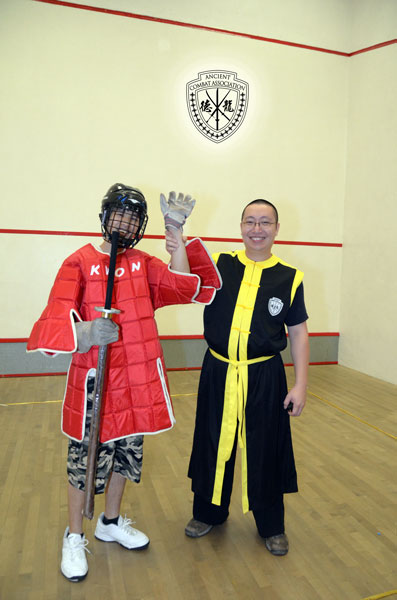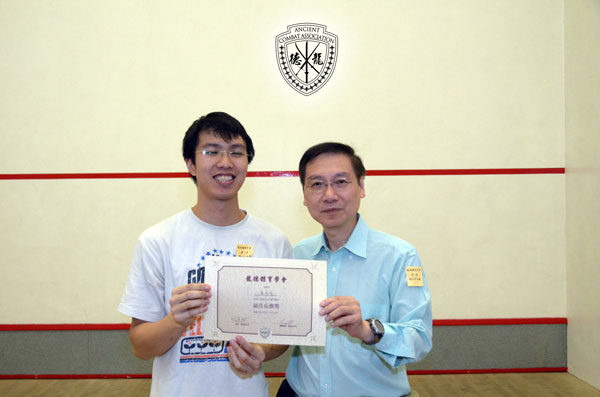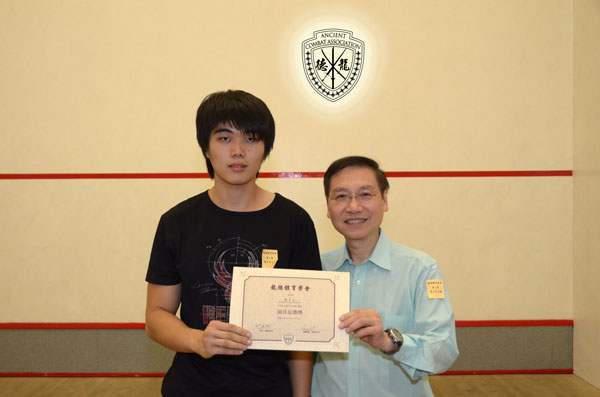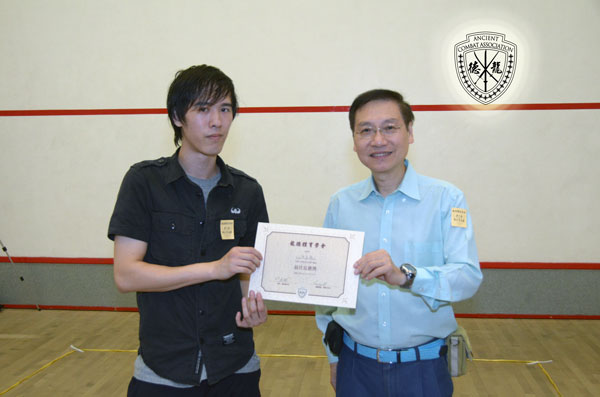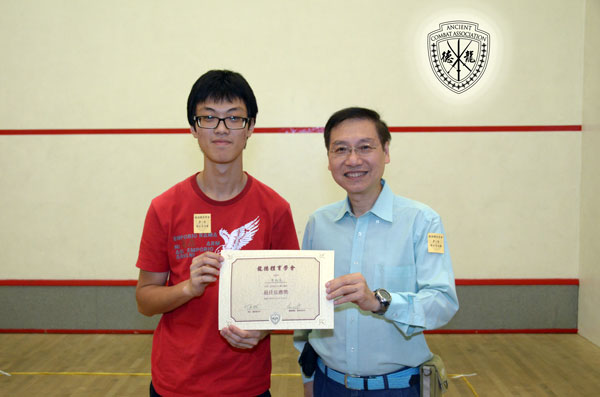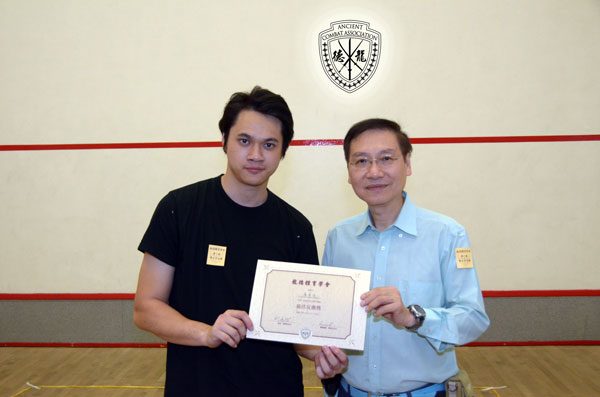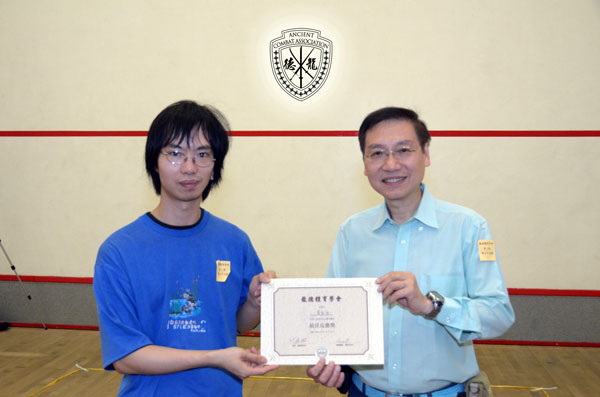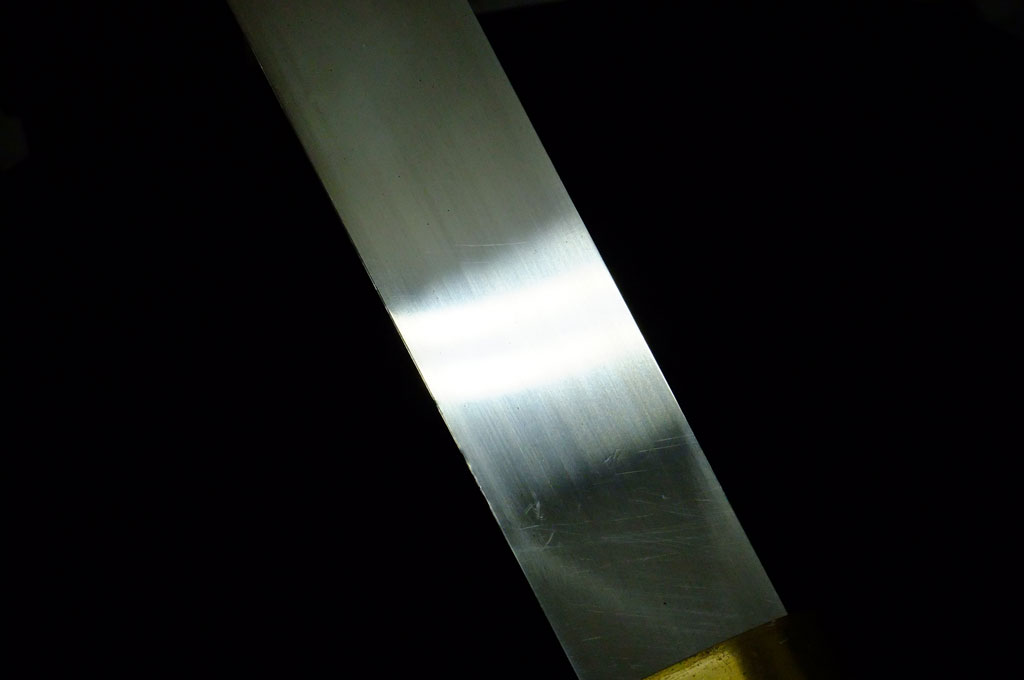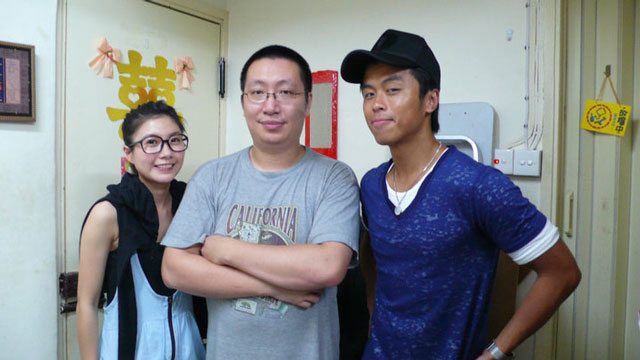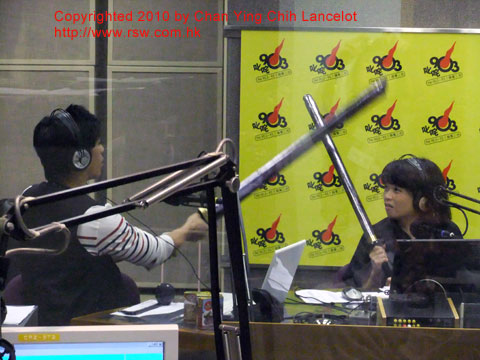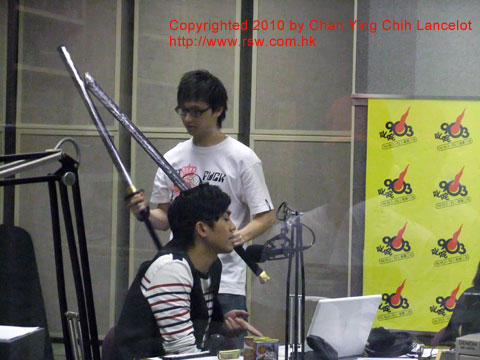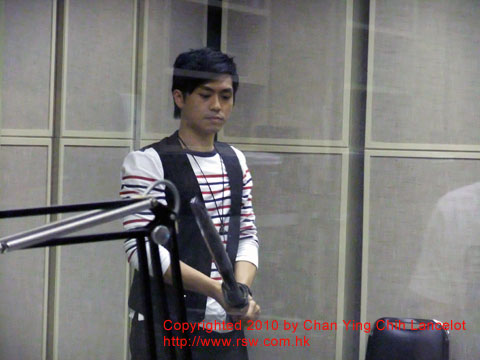

- Freestyle fencing with the historical arsenal
Activities
Activities
To Regular Activities To page 2
Latest Activities
On 24th June 2012, we had organized the 5th private tourney. We had invited Liu Yun-Chyau's Bajiquan (Hong Kong) - Jing Ding Club to participate again. Their coach Louis Lo, students Poon Hoi Man and Gary Tang joined the tourney and the students had competed with us. In this competition, in order to encourage self-preservation of the aggressor after delivering the attacks, we had implemented an temporary experimental rule of allowing a dying counter strike to be launched during my count down from 5, after the competitor had been hit. In addition, we had changed from accumulating points for hitting the opponents to deducting life points for getting hits by the opponents. The one who retained the most life points in his division would be the winner and could participate in the semi-finals.
However, some of the students took the wrong turn and neglected their life points. They became berserk and tried to attack regardless of self-preservation, in hope of making use the dying-strike rule and to deduct the opponent's life point in the shortest time. Those berserkers were proved to be ineffective for they had lost their life point in each round, leaving them 0 points at the end.
The winners of each division were all the composed, careful swordsmen who preserved themselves well, with Clement Cheung, an intermediate grade German longsword student, retaining the most, 7.5 life points out of 15 total.
The champion of the tourney, Pak Kin Wong a.k.a. Old Ghost, was well-known for his fineness, retained 7 points out of the division bouts.
Gary Tang from Jing Ding Club won the first runner up, who also retained 7 points. Gary was also the only one who won a division bout without getting a scratch, retaining all 5 life points.
Having learned from the lesson, we had improved on our experimental rule and will implement a better version on our upcoming 6th private tourney, which are detailed below:
Each player has 5 life points in each bout.
The bout ends if 10 rounds were played, 3 minutes time span has run up, or one of the players has lost all the life points.
Each round ends when one side has lost 1 life point or more.
If there was no length-compensation modifier in effect, getting hit heavily deduct 1 life point from the player, regardless of location. Getting hit lightly deduct 0.5 life point, regardless of location.
The player who was hit lightly, would have his own light attacks rendered ineffective. Heavy attacks will be at its half efficiency.
Length modifier works in this model. For every 15cm in the total length distance between the players' weapons, the shorter one will deduct an extra life point from the opponent. E.g. 2 points for heavy hits and 1 points for light hits. Double weapons' length are calculated combined. Shields' length is measured at the longest dimension.
So it will encourage each player to not getting hit at all, for even a light hit would greatly reduce the player's efficiency in the round. On the other hand, in order to deduct the most life point from the opponent, it would be wise to hit lightly to partially disable the player first, and then follow up with a heavy hit to finish the round. So one will deduct 1.5 life points from the opponent's life point pool. And the 0.5 life point extra will carry on to the next round, where the opponent only has 0.5 life point left for the upcoming round.
The videos of the 5th private tourney can be viewed here.
Louis Lo, the head coach of Jing Ding Club, presented the champion Pak Kin Wong a.k.a. Old Ghost the championship certification.
Alex Chan, the founder of Realistic Sparring Weapons, presented the first runner up Gary Tang the certification.
Lancelot Chan, the founder of Realistic Sparring Weapons, presented Hiu Tung Chan the certification of merit award.
Lancelot Chan, the founder of Realistic Sparring Weapons, presented Tak Kin Siu the certification of merit award.
Lancelot Chan, the founder of Realistic Sparring Weapons, presented Ming Ting Mak a.k.a. Taku the certification of merit award.
Lancelot Chan, the founder of Realistic Sparring Weapons, presented Clement Cheung the certification of merit award.
Louis Lo, the head coach of Jing Ding Club, gave the competitors an encouragement speech.
During the final's final round, Old Ghost pushed Gary Tang off limit to win the bout.
During the final, Old Ghost defended himself from Gary's Miao Dao strike with Bagua Dao.
During the final, Gary Tang launched a thrust straight to Old Ghost's throat.
During the semi-final, Gary Tang counter strike at Clement Cheung's body.
In a division bout, Hiu Tung Chan went off the limit when Taku was thrusting at him. Taku eventually went off the limit as well, resulting in the only double off-limit kill in the tourney
In a division bout, Hiu Tung Chan evaded Jonah Chan's thrust and counter cut at his head.
In a division bout, Tak Kin Siu launched a single handed attack with his Nodachi to intercept Hoi Man Poon's Miao Dao.
Fion Chan was the score marker again.
On 18th March 2012, we had organized the 4th private tourney. We had invited Liu Yun-Chyau's Bajiquan (Hong Kong) - Jing Ding Club to participate again. Their coach Louis Lo, students Poon Hoi Man and Gary Tang joined the tourney and competed with us. In this competition, the performance of the competitors were more in line with their usual prowess. That meant the increase of tourney experience had helped them to improve their psychological quality, thus allowing them to spar with their usual abilities. There were also lesser double kills in this tourney with an increase in critical hits, which was a result of improvement in swordsmanship.
Yau Yan
Old Ghost
On 15th January 2012, we had organized the 3rd private tourney. This time we had invited Liu Yun-Chyau's Bajiquan (Hong Kong) - Jing Ding Club to participate. They study Baji Quan and practice Miao Dao, a kind of Chinese two handed long sword. Their coach Louis Lo, students Poon Hoi Man, Gary Tang and Yung Tze Him joined the tourney and competed with us. The overall level of skill displayed has improved this time.
Originally, at the end of the tourney Lancelot was to spar with Louis as a demonstration. However, Louis' wrist was strained from blocking a powerful cut during a match with Harry Hui, thus Lancelot ended up sparring with Louis' students Tang and Yung respectively.
Some of the in-action photos showed that the flexible tips did their job very well in protecting the partners during those hard thrusts to the throat and to the groin. Every recipient was uninjured. Such were the proofs of Realistic Sparring Weapons' high degree of safety.
Shown below are the videos of the activity:
Division matches:
http://www.youtube.com/
watch?v=QRngnIziE9c
On 20th November 2011, we had organized the 2nd private tourney. However, due to some students being unable to show up, I had invited a guest Keith to attend. He had received training in Chinese martial arts, fencing and Japanese swordsmanship. At the end, he won the tourney beautifully, showing my students a good lesson of how to deal with longer and stronger weapons with skills and an analytical mind.
The contestants did not share the same amount of training. Some of them were experienced while some were sparring in a tourney for the very first time.
Shown above is the diagram of the flow. The red name indicates the victor of the bout.
The rules of the tourney were listed below:
Double elimination tournament, 3 minutes maximum per bout, with 10 rounds maximum. The contestants who survived 5 rounds first, or the one with more survived rounds at the end of 10 rounds or 3 minutes, would become the winner of the bout.
If double hit occurred, the one that did not sustain lethal or disabling hit would be the survivor.
For every 15cm in the length difference between the contestants' weapons, a survived round was awarded to the shorter weapon user. For twin weapons user, the length would be the total of all the weapons combined. For shield, it would be the long diameter that counted.
The shorter weapon user will be awarded 2 rounds victory if he could survive clean.
It was an immediate disqualification to hit the opponent with the hilt when the weapon was airborne, or hitting the audience or the camera.
The arena size was 11' x 11' and stepping out of the boundary caused a lost round.
When each round ends, both contestants had to return to their respective corners before the next round starts.
The vertically held signal meant the survivor won the round without a scratch.
The horizontally held signal meant the survivor won the round with non-lethal wound(s).
The downward crossed signals meant double kill.
All the videos are shown below:
Division (Victors of the bouts are spread among group A and B)
1.Yau 5 vs mk 2
2. kin 2 vs keith 5
3. old ghost 4 vs homan 6
4. desun 0 vs hong 6
5. honwing 2 vs taku 5
6. harry 2 vs yue 5
7. Dung 5 vs Henry 4
8. kc 0 vs Cloud 5
Elimination
9. Yau 5 vs Kin 4
10. mk 0 vs keith 5
11. desun 5 vs homan 3
12. old ghost 3 vs hong 5
13. harry 5 vs taku 1
14. yue 5 vs honwing 0
15. kc 6 vs dung 0
16. cloud 5 vs henry 3
Quarter Finals
17. desun 2 vs yau 5
18. keith 5 vs hong 3
19. harry 5 vs kc 1
20. yue 6 vs cloud 3
Semi Finals
21. yau 0 vs harry 6
22. yue 3 vs keith 4
Final
23. keith 5 vs harry 3
Talent show: Kung Fu performance by KC
Awards and speeches giving
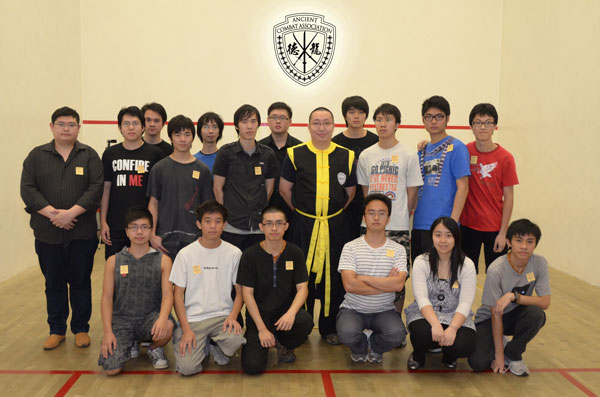
In order to let the current students to accumulate realistic sparring experience and to build better psychological qualities, Ancient Combat Association held a private tournament on 23rd October, 2011.
The rules of the tourney were listed below:
Double elimination tournament, 3 minutes maximum per bout, with 10 rounds maximum. The contestants who survived 5 rounds first, or the one with more survived rounds at the end of 10 rounds or 3 minutes, would become the winner of the bout.
If double hit occurred, the one that did not sustain lethal or disabling hit would be the survivor.
For every 15cm in the length difference between the contestants' weapons, a survived round was awarded to the shorter weapon user. For twin weapons user, the length would be the total of all the weapons combined. For shield, it would be the long diameter that counted.
It was an immediate disqualification to hit the opponent with the hilt when the weapon was airborne, or hitting the audience or the camera.
The arena size was 11' x 11' and stepping out of the boundary caused a lost round.
When each round ends, both contestants had to return to their respective corners before the next round starts.
The preliminary contests
Kin vs Hong
Yuegum vs Taku
Yue vs Mars
Dung vs Jimmy
Quarter Finals
Hong vs Taku
Kin vs Yuegum
Mars vs Jimmy
Yue vs Dung
Semi-Finals
Hong vs Mars
Yuegum vs Yue
Final
Mars vs Yuegum
Shown below was the highlight of the final with the high-speed camera footage.
Mars won the tourney with Yuegum being the next.
It was an very exciting event, with 8 contestants and 11 bouts. The small arena size was new to the students but it was done this way with purposes:
1. To limit the room for the longer weapon using contestants to maneuver. Also, added with the length-difference compensation rule, there were many varieties of skillful presentation in the tournament, including closing-work, bind and wind, fighting for the center line, crouching low to launch an attack and dodging an over-head cut simultaneously. On the other hand, the common length-bullying works that were so common in other tourney had become rare;
2. To encourage initiative. Many contestants thought there were no room to back off or evade. That was because they did not dare to gain some ground at the beginning.
Besides, some contestants also raised the question of the need of armors. Well, in this tourney the level of intensity was a lot higher than our usual sparring practice, including full power cut to the belly and intercepting hit to the shoulder. Such impacts would have led to a stoppage in our normal practice, while it was ok here. Thus the armors provided a lot safety to the contestants.
In addition, sparring in the armor would be a good weight training. That was why Tom Biliter was so good. He used to spar in full metal armor and when he took that off, he was unstoppable.
Thus I hope the students would be able to overcome these 2 factors eventually and raise the par.
On 15th April 2011, Exiel had paid us a visit from Taiwan. He was the activity organizer in Taipei. He got up at 3 o'clock in the morning to attend a 6 o'clock flight, then wandered on the streets for 9 hours before the meeting time due to hotel arrangement problem. After arrival, we had let him to conduct test cutting first, which was the first time he had ever done. The diameter of the newspapers roll he cut through was impressive, close to 5". Afterwards, he also sparred with Lancelot with his self-made two-handed Chinese Jian.
On 26th April, 2011, Lancelot had organized a test cutting event at Toyama Ryu to let his students and friends to try out cutting tatami mat. Many of them were cutting tatami mats for the first time. Here we present Lancelot's students test cut first. Lancelot provided the miao dao they used, which was super sharp (good for tatami) but could not withstand hard-plastic bottles cutting without the edge rolling, not to mention hitting pork bone.
Shown below was the edge of Deva Slayer. Note the reflection of light that showed the appleseed cross section.
Shown below was the edge of the Miao Dao. Note the rolled edge from cutting plastic bottles.
Taku, first wielded his Paul Chen side sword that was sharpened to withstand cutting hard objects (battle-sharp). Then he switched to the Miao dao and everything goes.
His katana was cold steel 88k that was very sharp, and the Chinese jian was only battle-sharp, then katana again.
Dung used his battle-sharp huanuo willow leaf sword. His vertical cut later switched to the miao dao.
These were my entry level student. The swords they used were good for tatami.
My friends' test cut videos:
His katana was sharp for tatami.
His huge bagua sword was totally blunt. Then he switched to a tatami-sharp katana.
My friend's ching dao was battle-sharp. Then he switched to the super-sharp Miao dao.
And finally, my video of test cut.
Deva Slayer was a battle sword, thus it was not meant to be tatami-sharp. I included EVERY failure in the video for reference. :) And the last vertical cut, I did it with the super sharp miao dao..... it cut into the dry double roll mat beneath the 3 mats I severed. It shows how important sharpness meant to tatami cutting. However, cutting pork arm and newspapers roll were not so sensitive on sharpness. Even the blunt bagua dao sword had cut newspapers roll successfully before. Pork arm and newspapers roll, on the other hand, required a lot more power generation and blade alignment then sharpness than tatami cutting (as one can see how well Taku did with the miao dao, while he couldn't cut newspapers rolls as good), which I value more for being realistic to historical battle usage.On 27th August 2010, Mankit Li passed by Hong Kong after returning from a swordsmanship seminar hosted in Japan. It has been several years since Lancelot and Li had made their first contact. However, they had never met up before. Thus, Li took the rare chance to pay us a visit. Li hosted his sparring activities in California for many years and they sparred with various equipment. As a result, Li has become very skillful and explosive. There were many solid hits and exchange of blows in this spectacular sparring event.
On 18th July 2010, Lancelot was presented on RTHK programme Gimme5. The interview was conducted in Cantonese and the recordings can be downloaded here.
On 3th June 2010, Lancelot was invited by a local celebrity Kitty Yuen to a morning program of Commercial Radio Hong Kong for interview. He brought along a RSW katana and a RSW Deva Slayer for the two hosts to obtain a first-handed experience. During the interview, Lancelot answered many questions regarding weaponry martial arts, their respective histories, approaches and philosophies. He also threw in a couple funny stories to raise the audiences' interest. The interview was conducted in Cantonese and the recordings can be downloaded here: Part 1 Part 2
Regular Activities
Gauntlet
Are you confident in your weaponry skill?
Do you want to practice with a dedicated partner?
Are you interested in fighting the crew of Realistic Sparring Weapons in a simulated dueling mode, where there is only 1 round to determine who's dead and who's alive?
Then the Gauntlet is for you!
In the Gauntlet, the most significant feeling is the pressing survival urge, because you can only be hit once. If you can win, you'll receive both a certification signed by your opponent to prove your victory and a 50 HKD coupon.
Opponent: Lancelot Content: Realistic Sparring Weapons combat (rules), one round only. The winners will be awarded a 50 dollars coupon for Realistic Sparring Weapons. Time: Individual arrangement. Location: Rendezvous at Showroom. Suitable For: Age 15 or up. For those who're younger than 18, parental permission is required beforehand. Note: People may use their own sparring weapons if they have been deemed safe.
Realistic Sparring Weapon can be rented at 15 HKD per 3 minutes.
Helmet and mask can be rented at 10 HKD per 3 minutes.
Sign up: Click here or take the sign up form at the Showroom. Fee: 25 HKD

